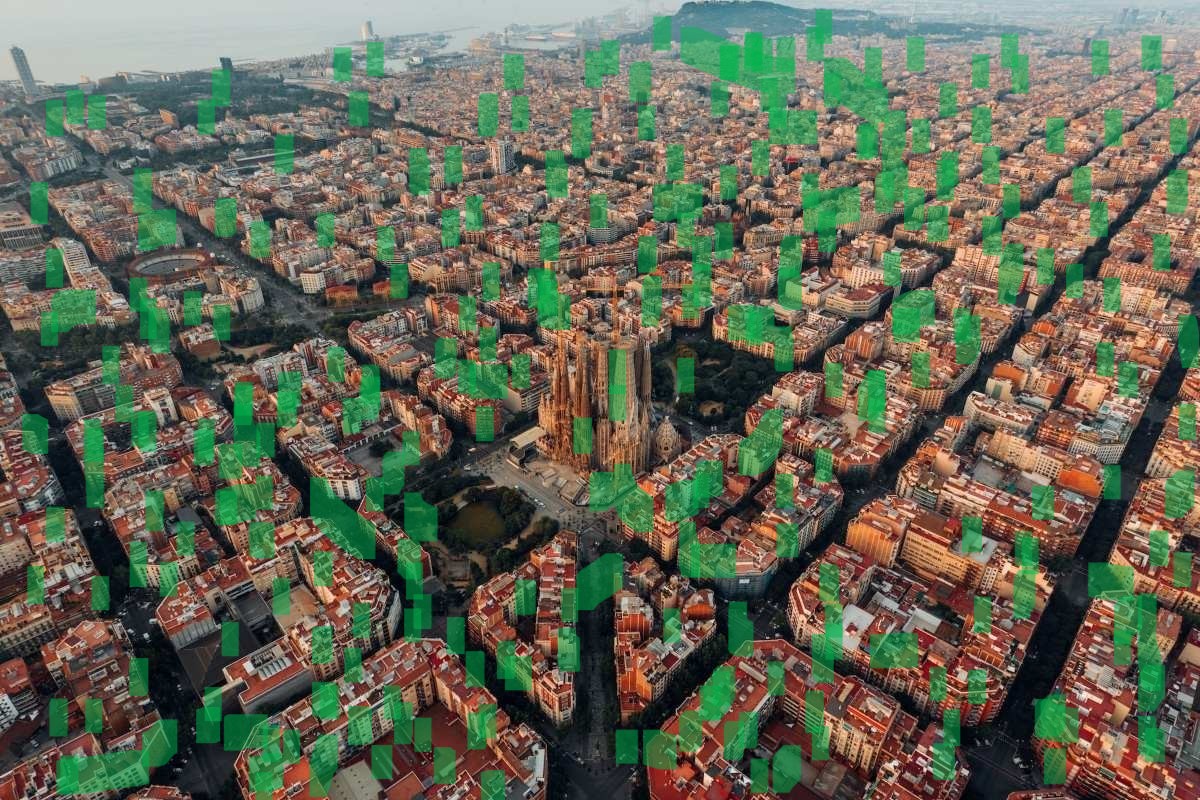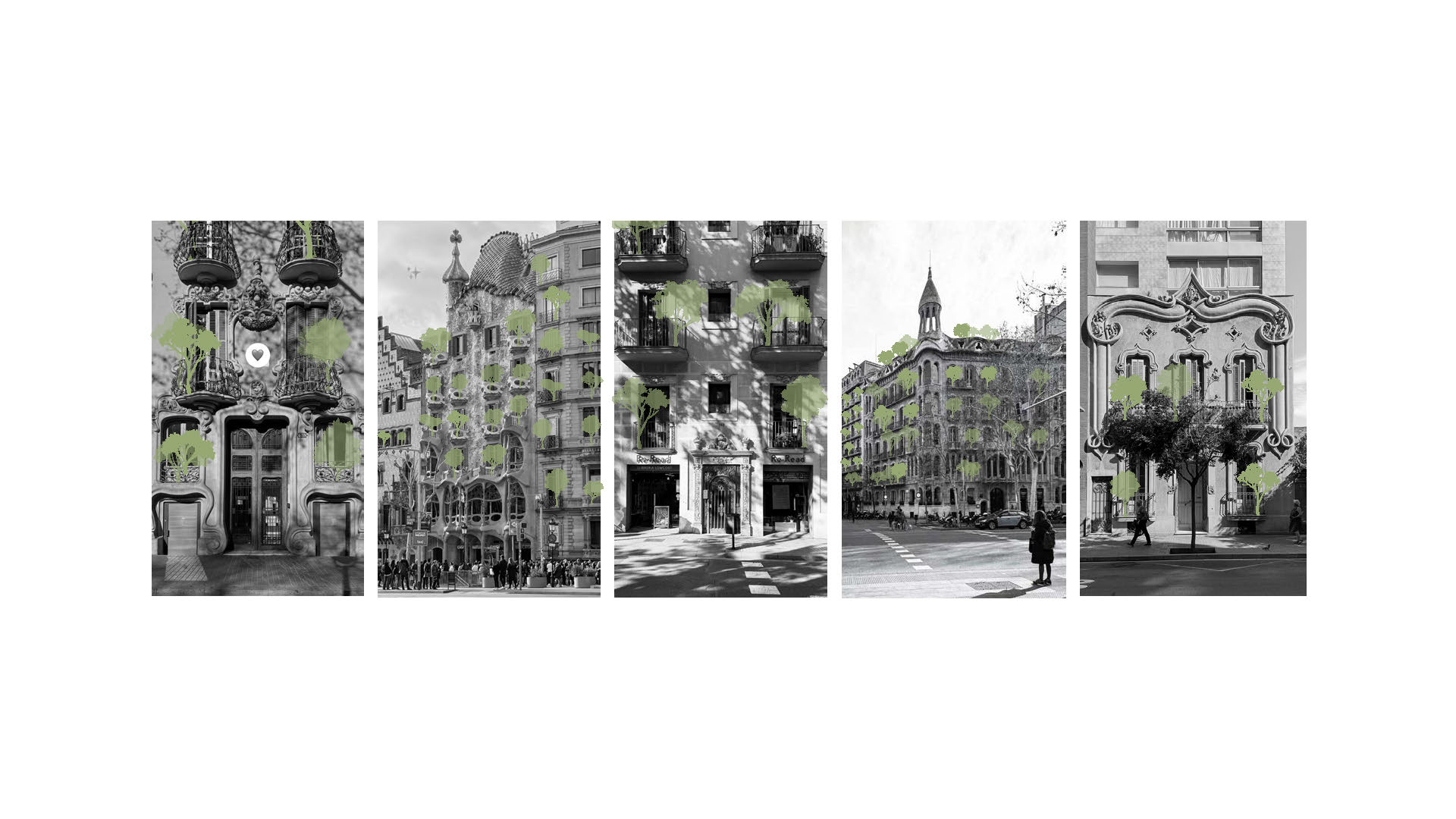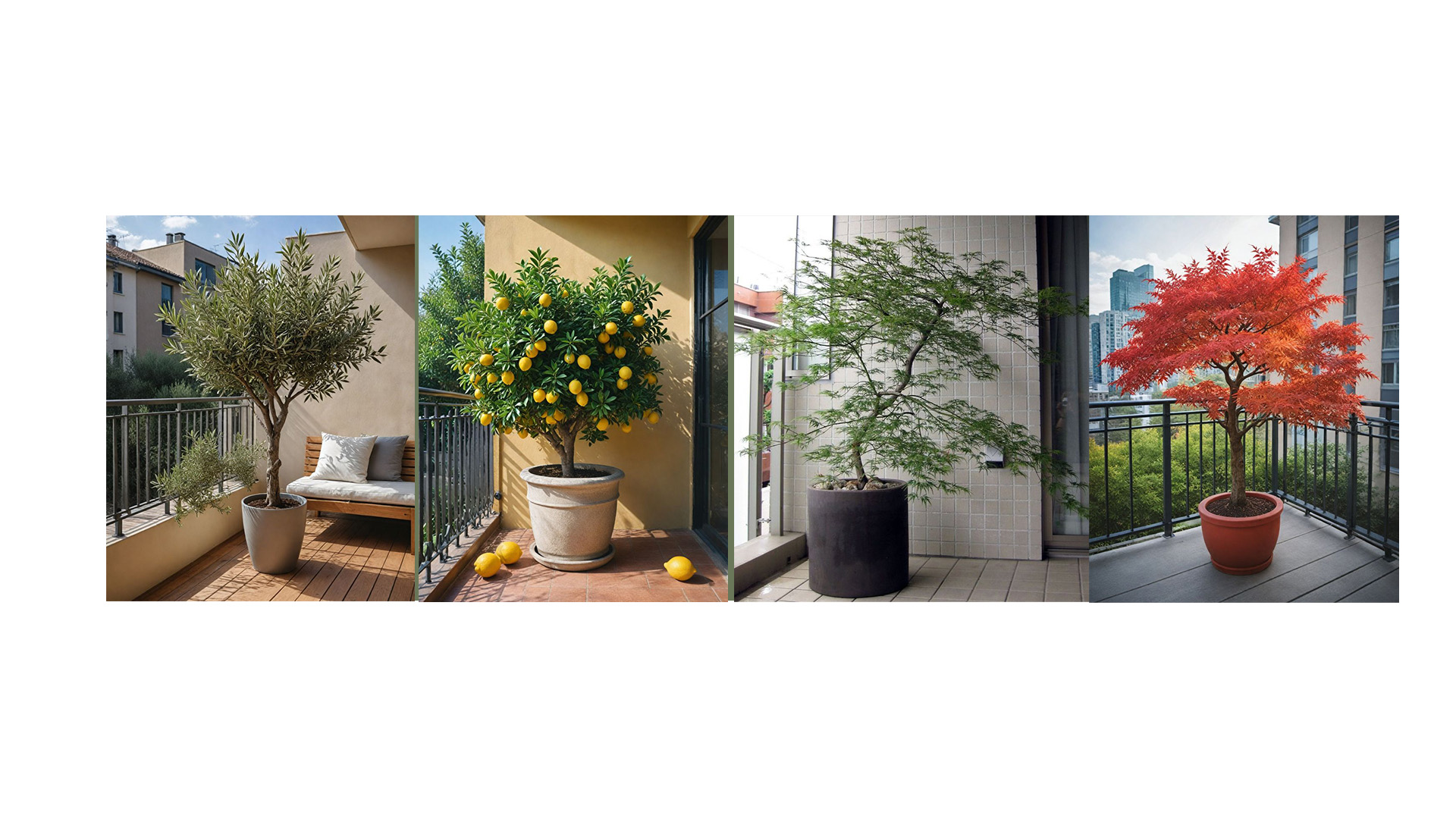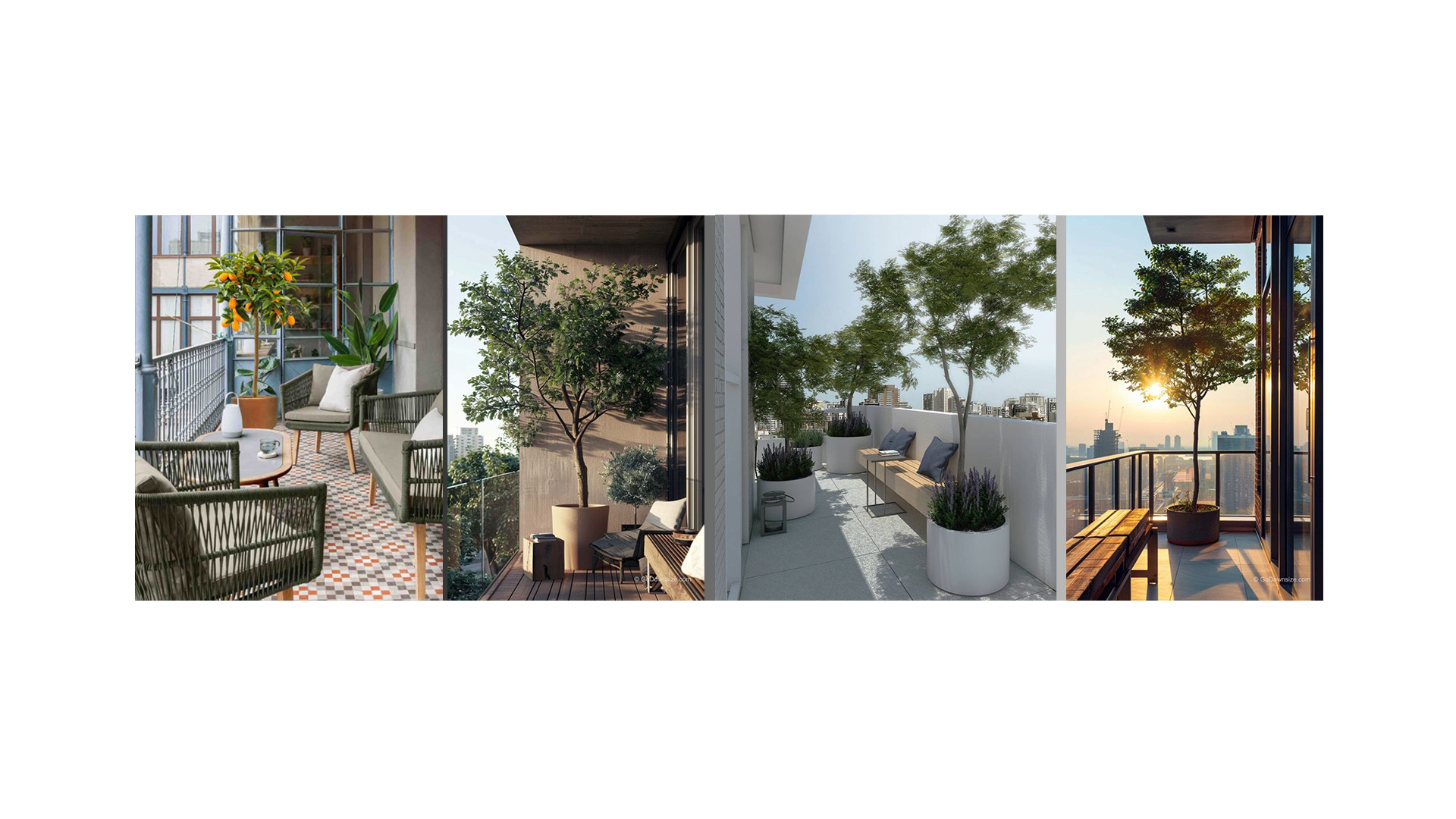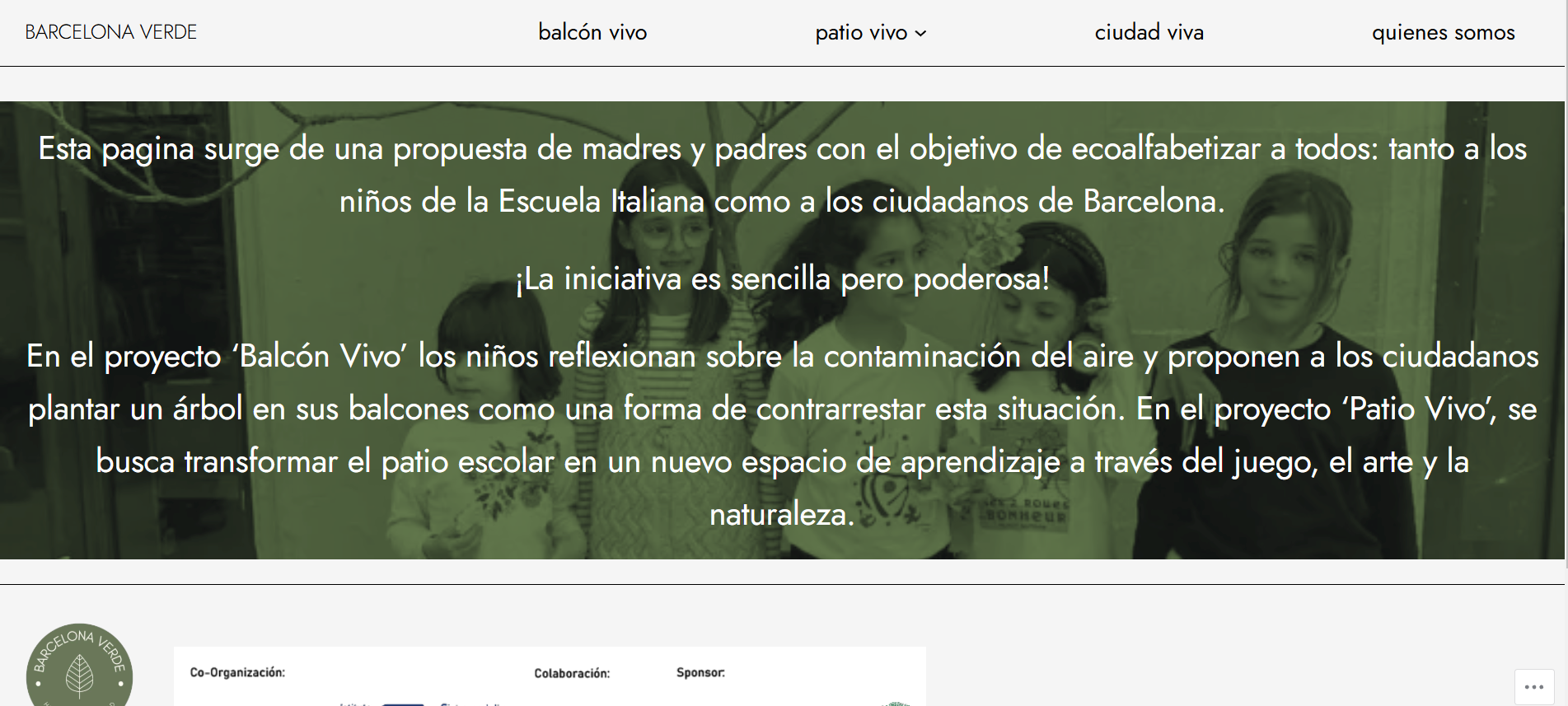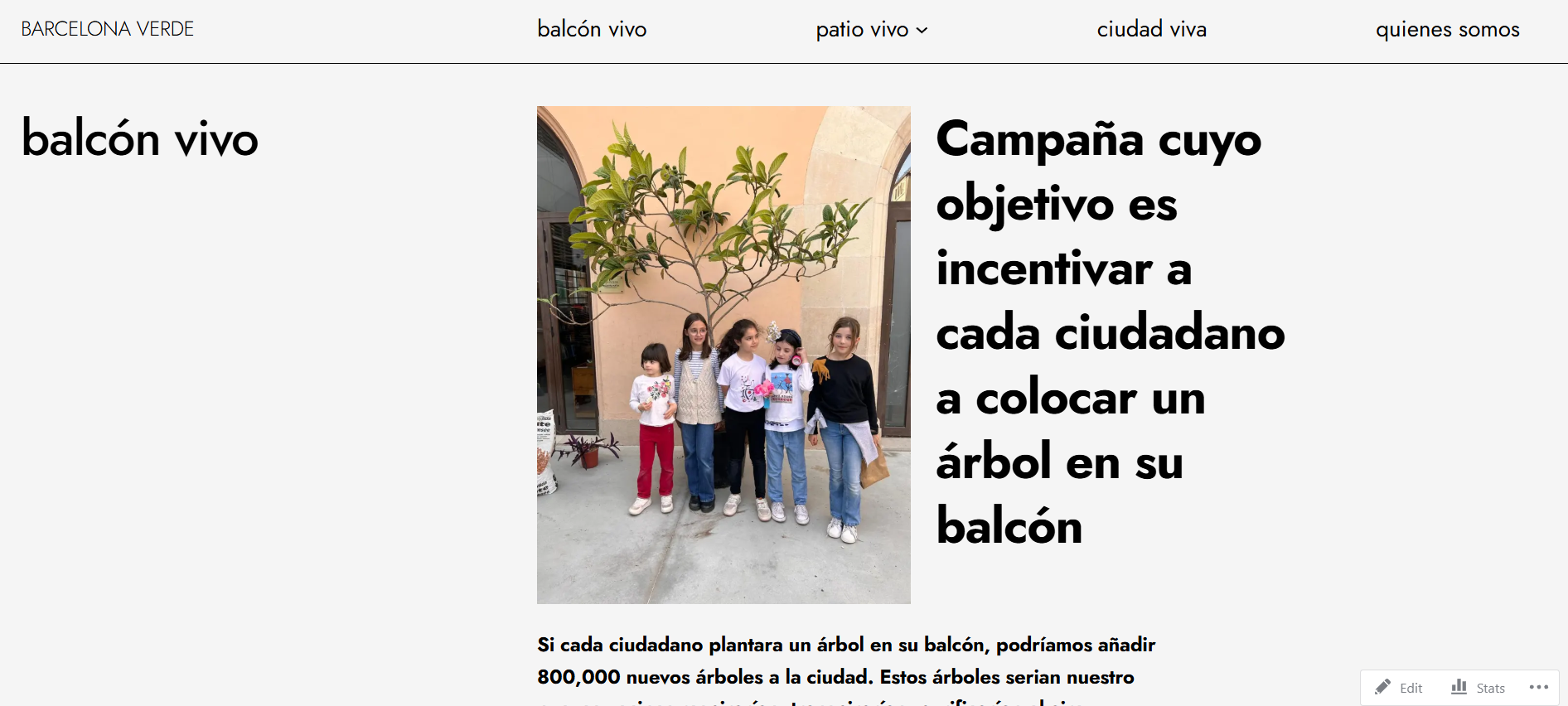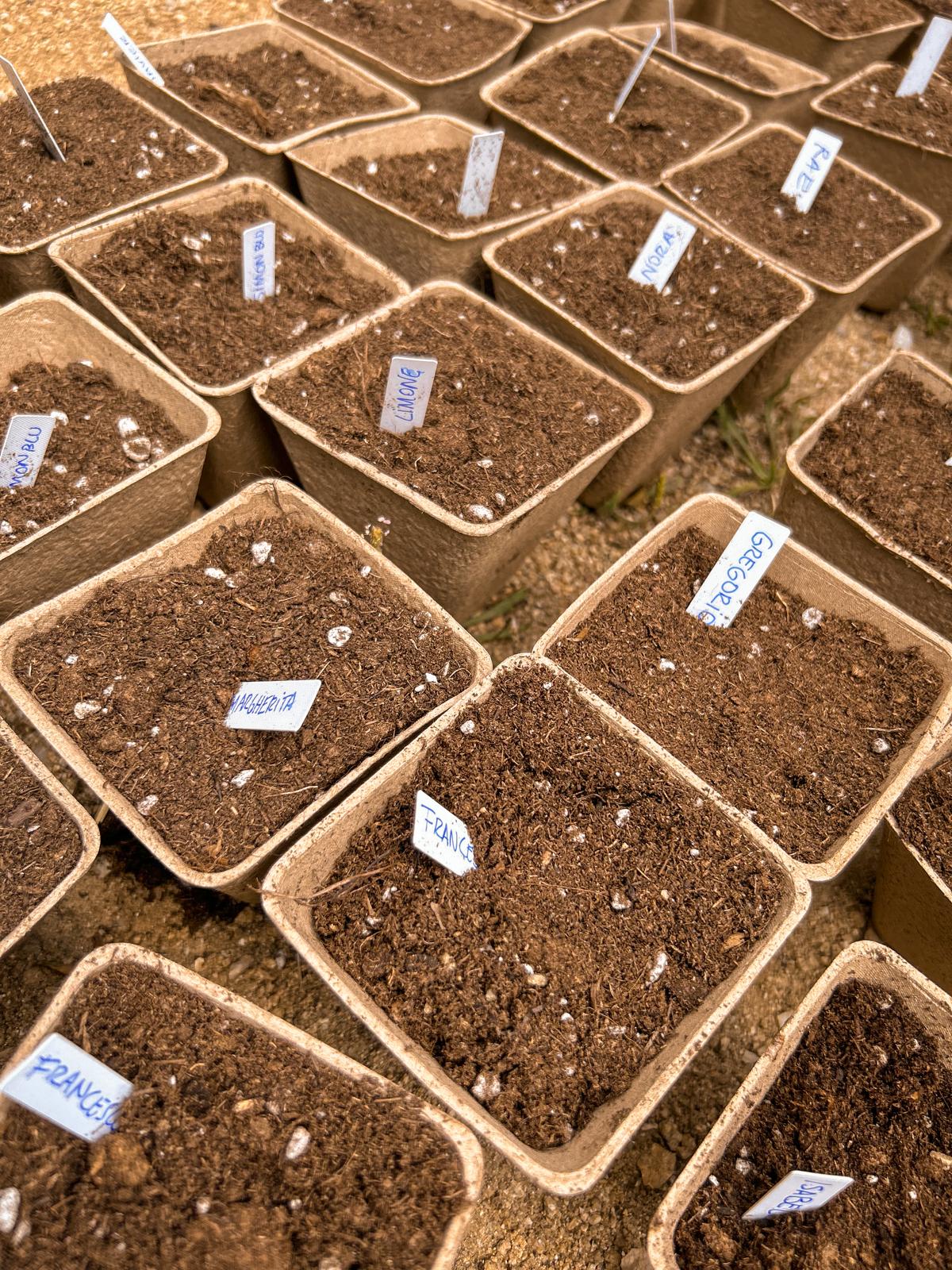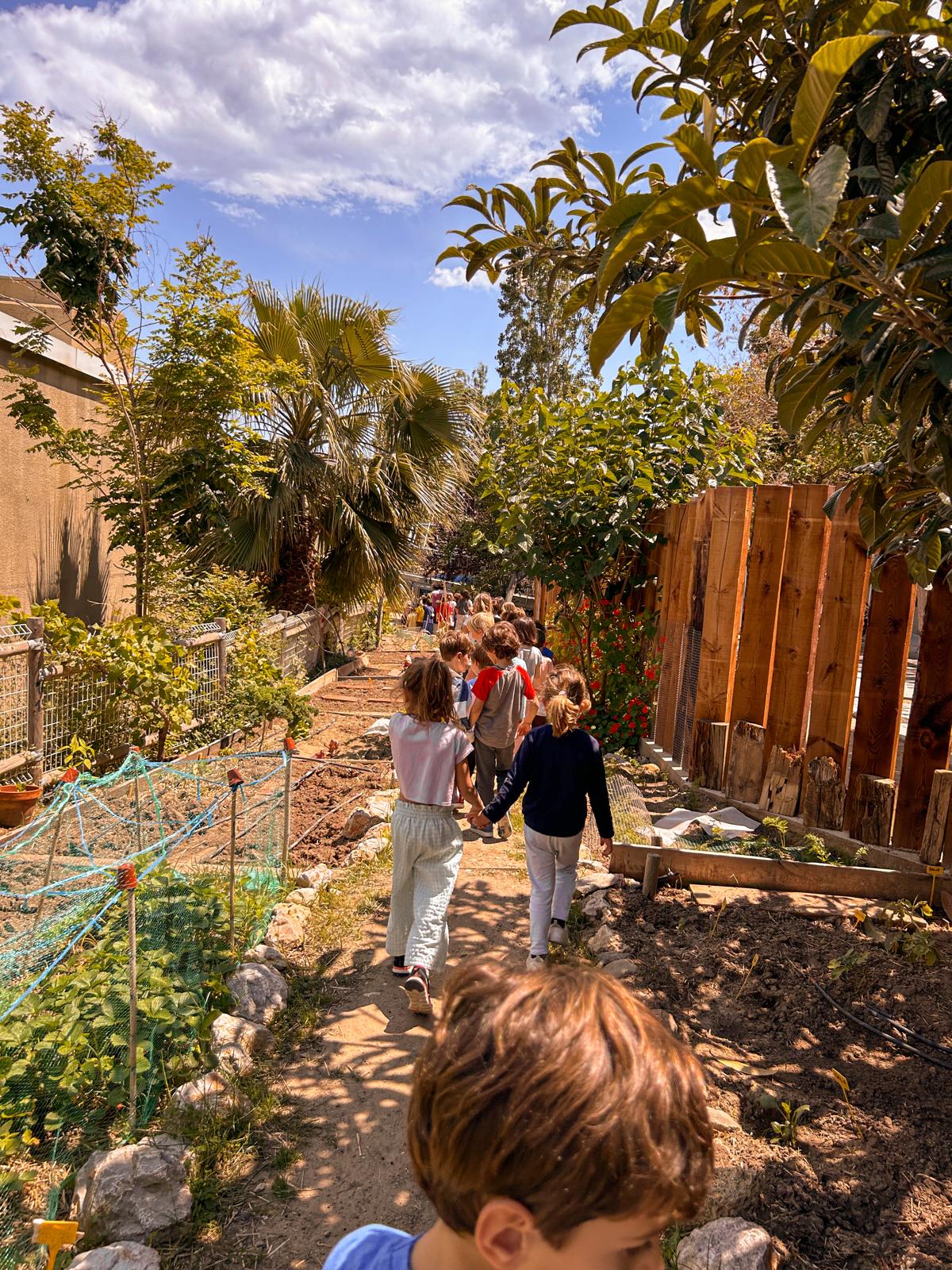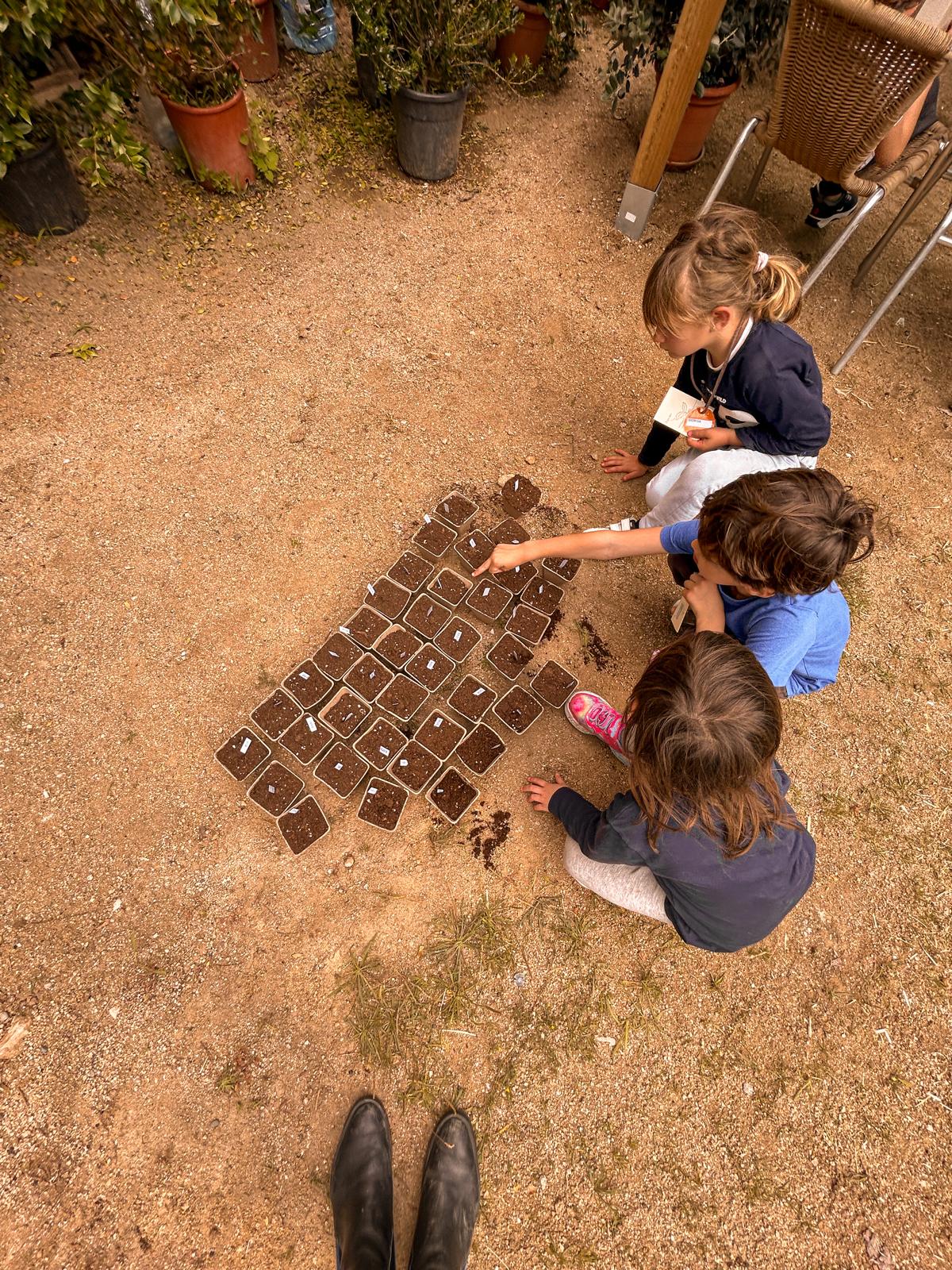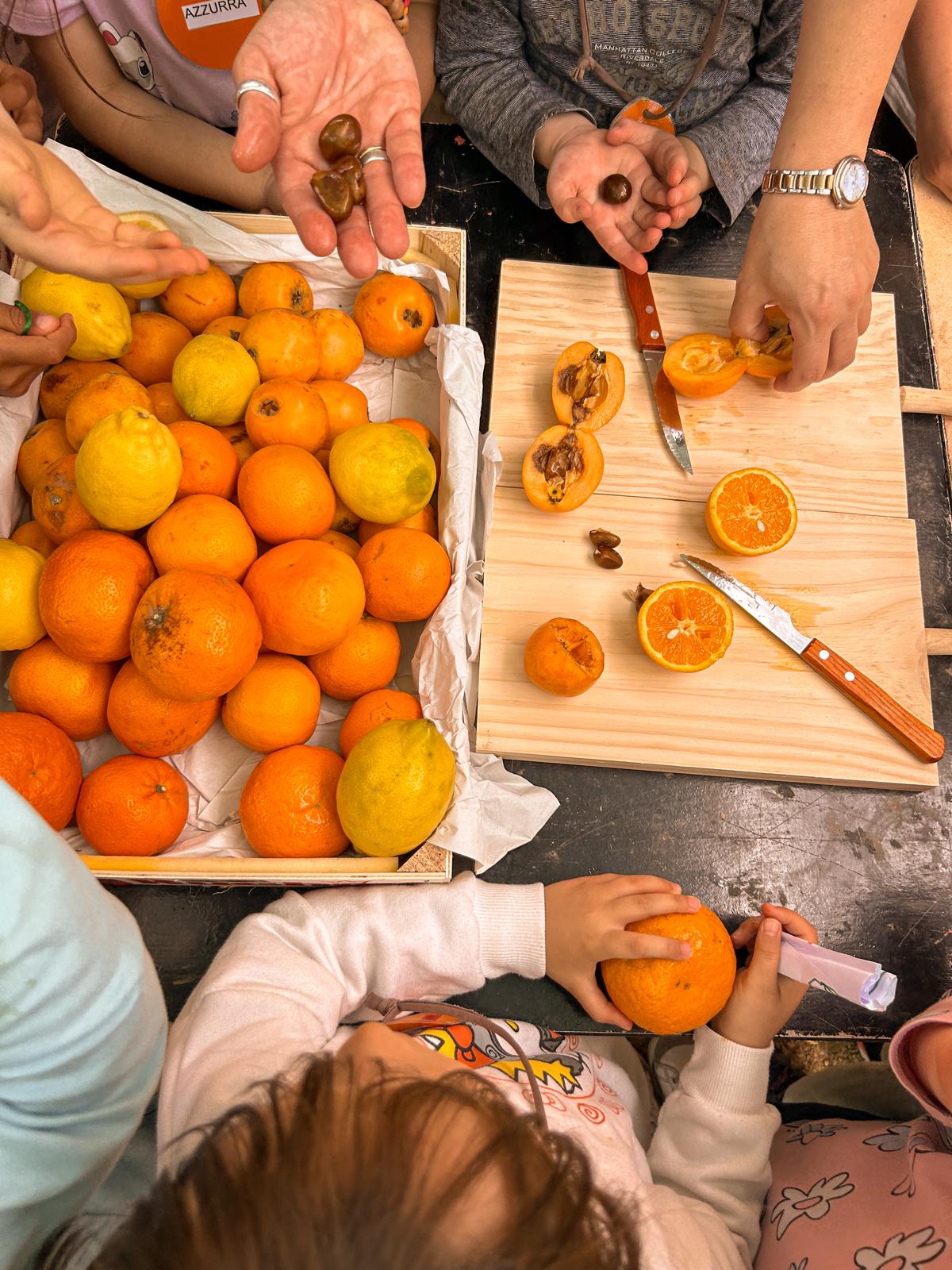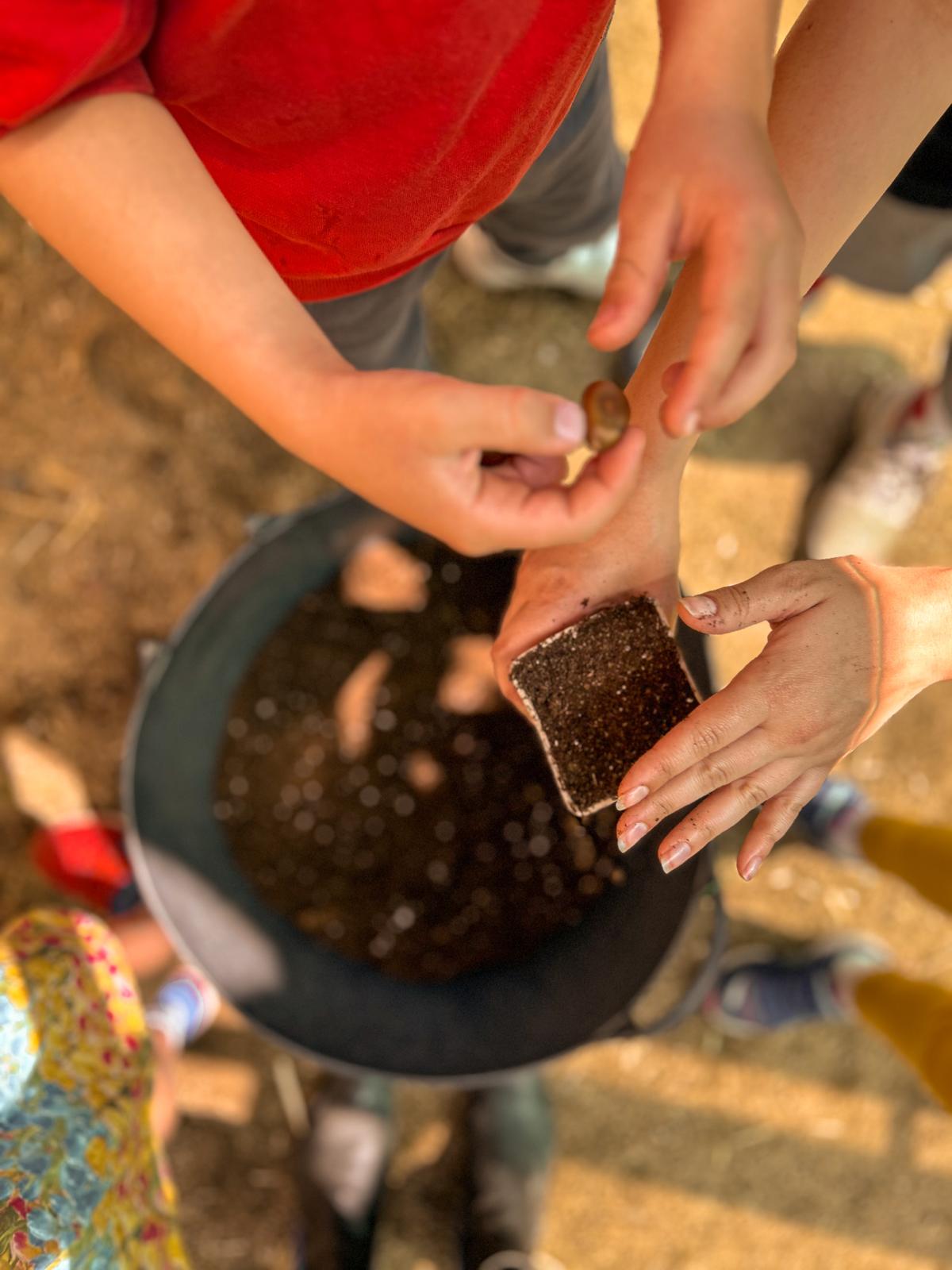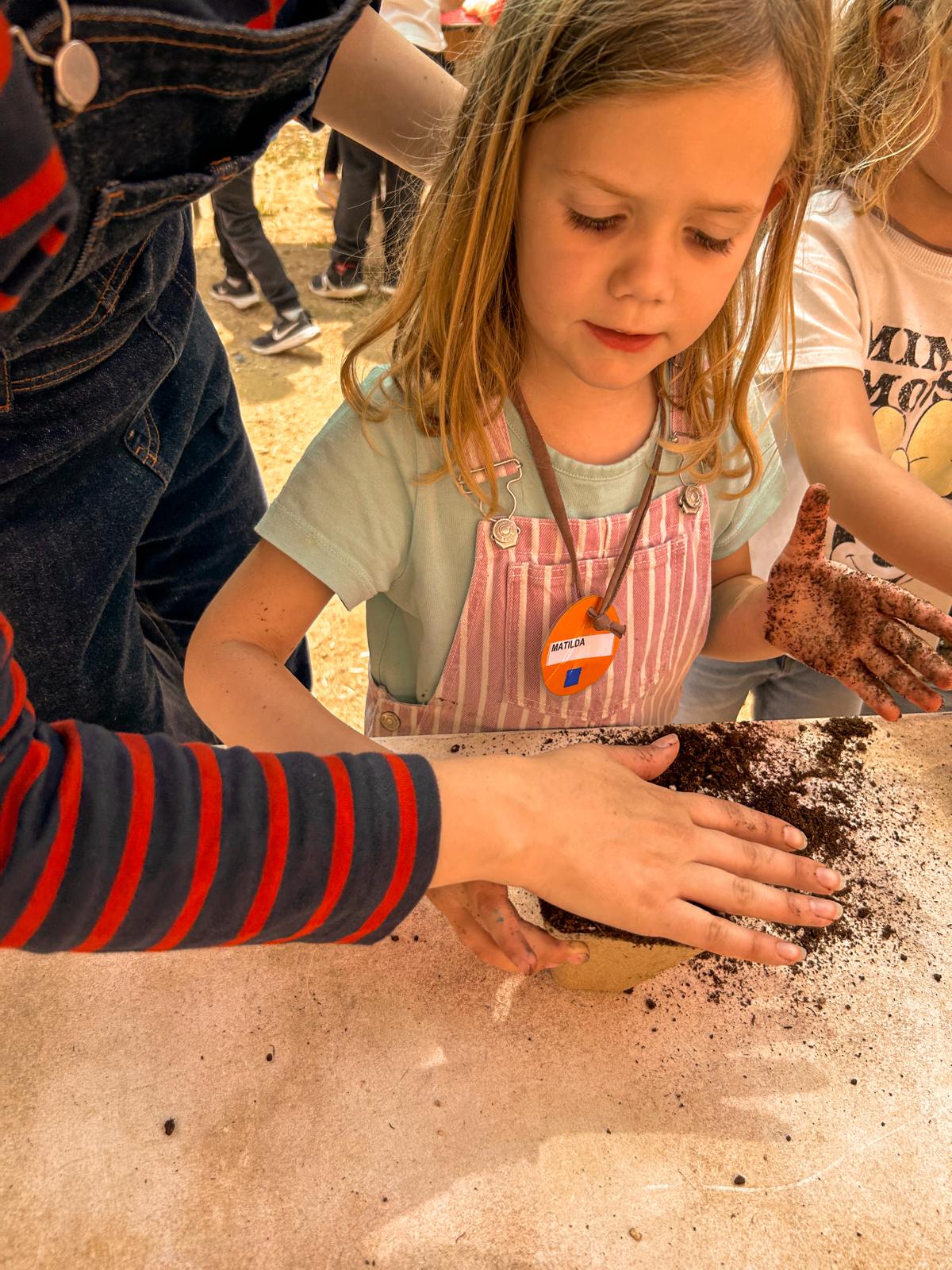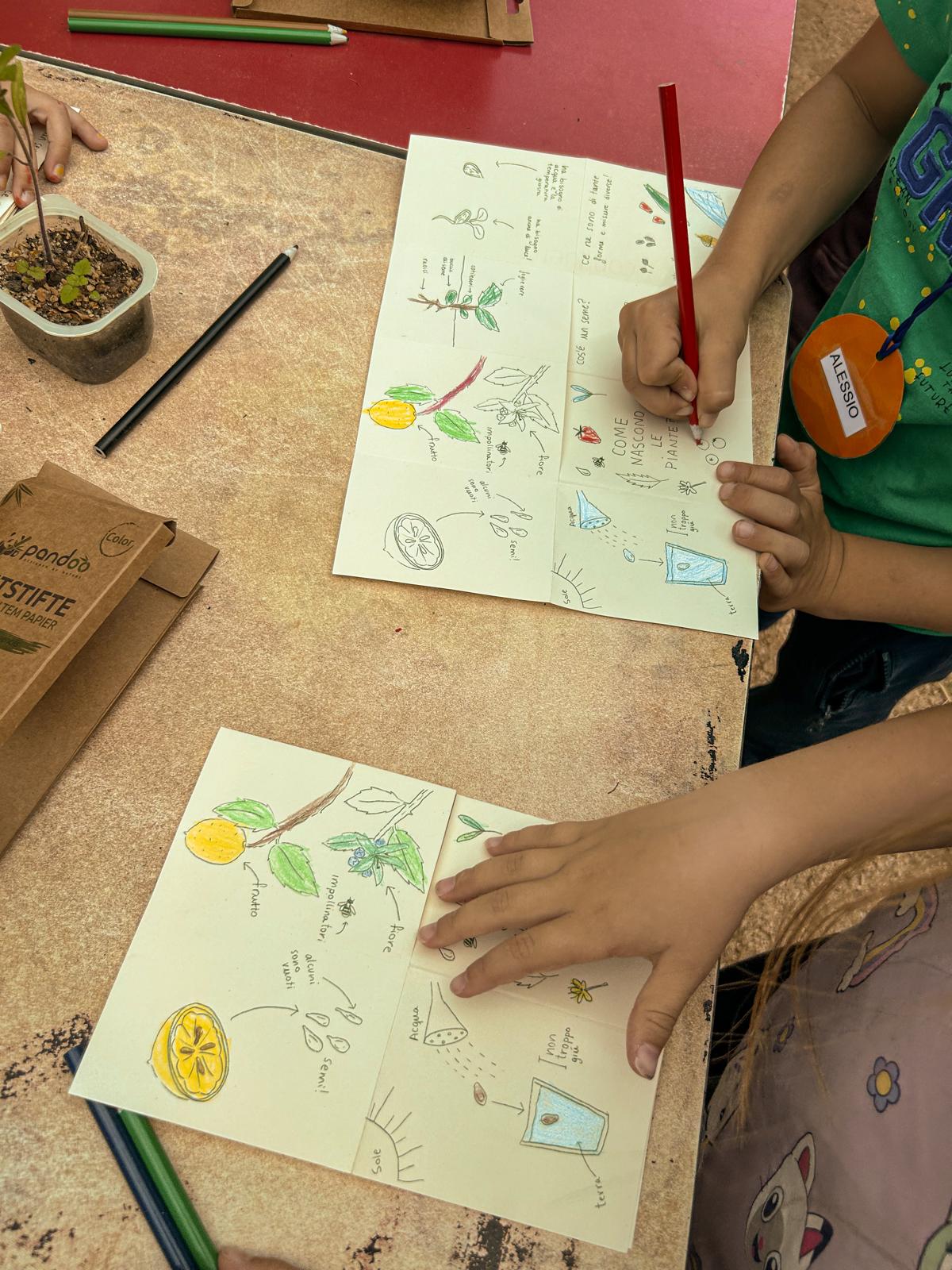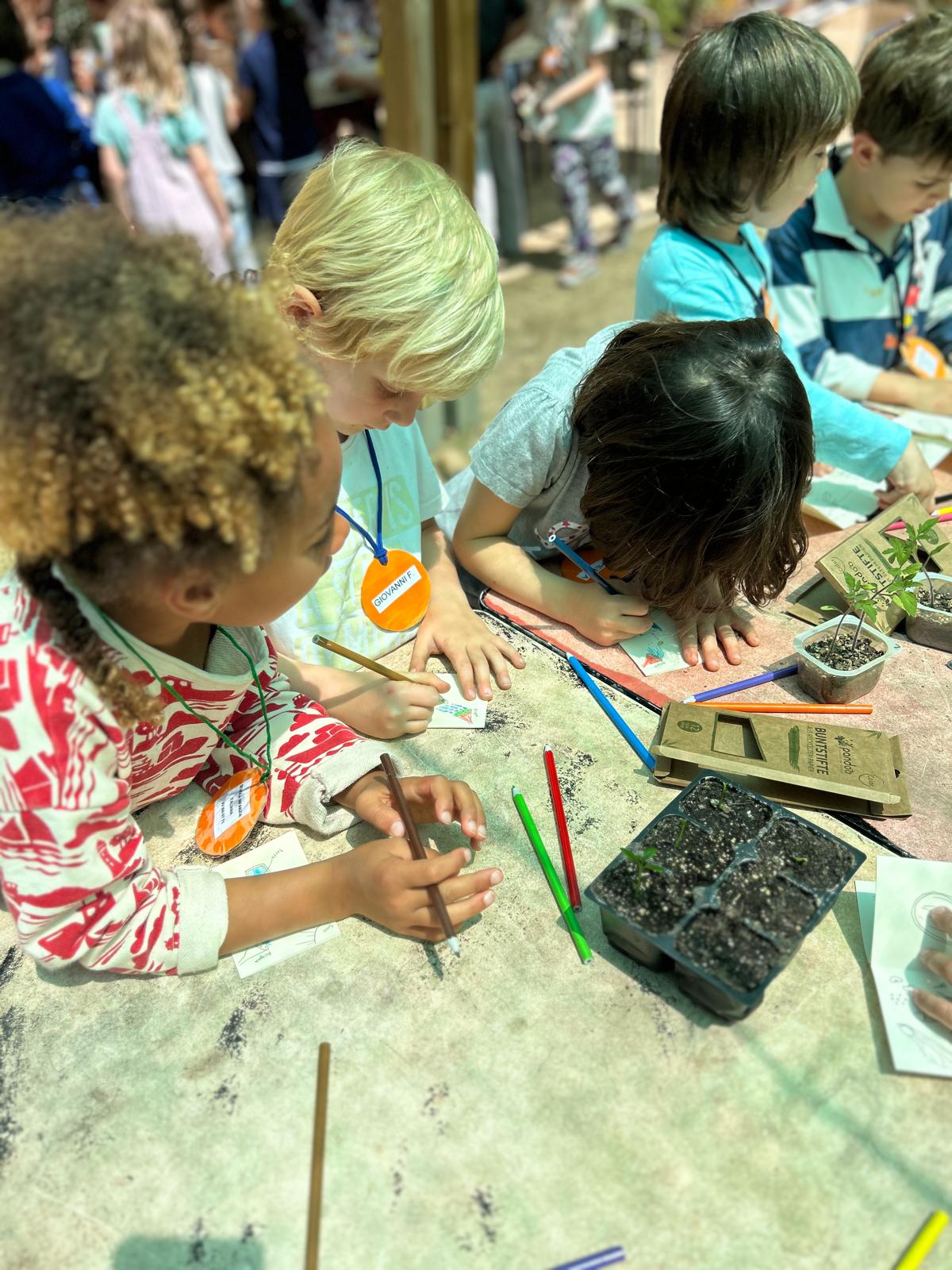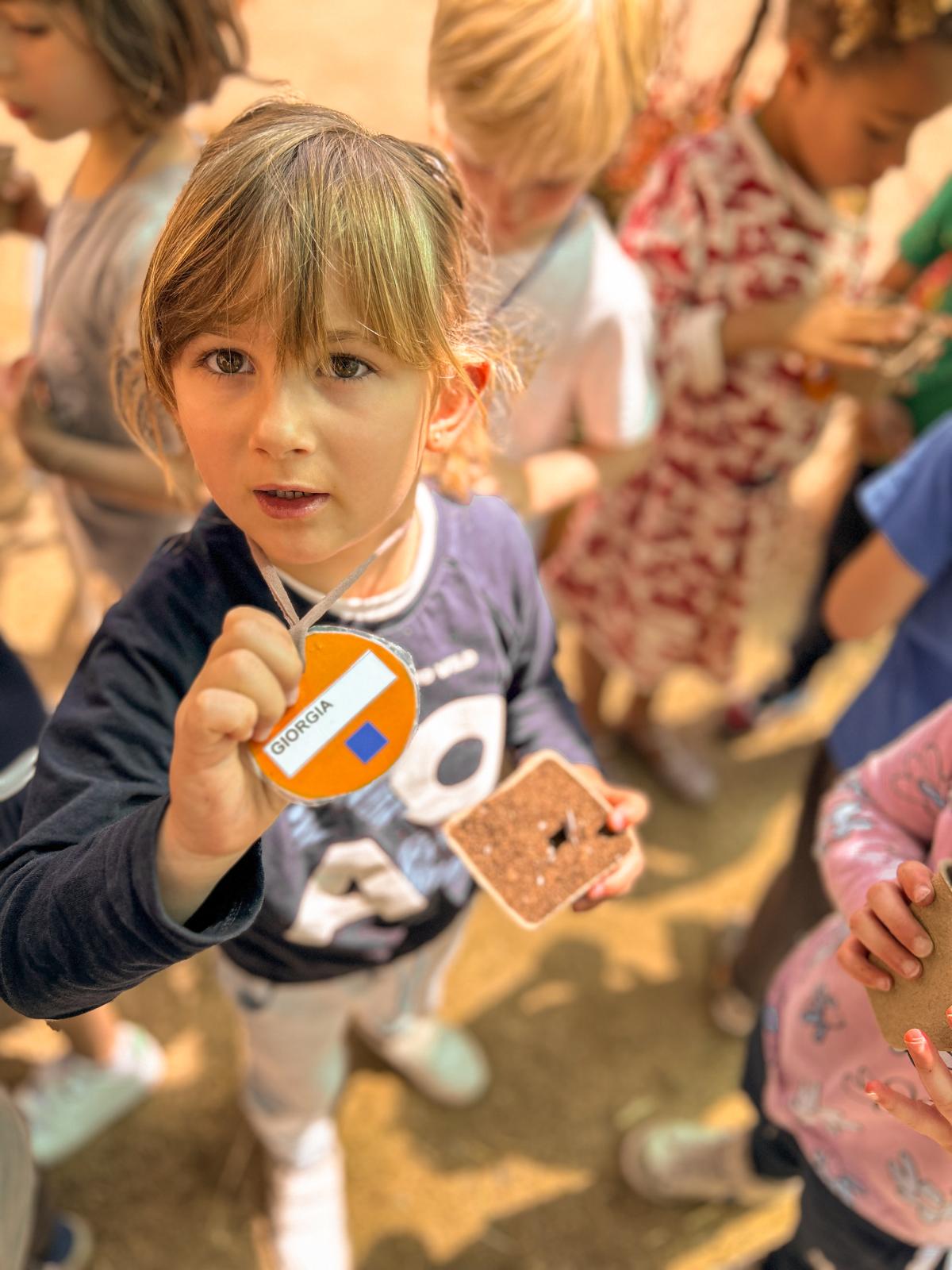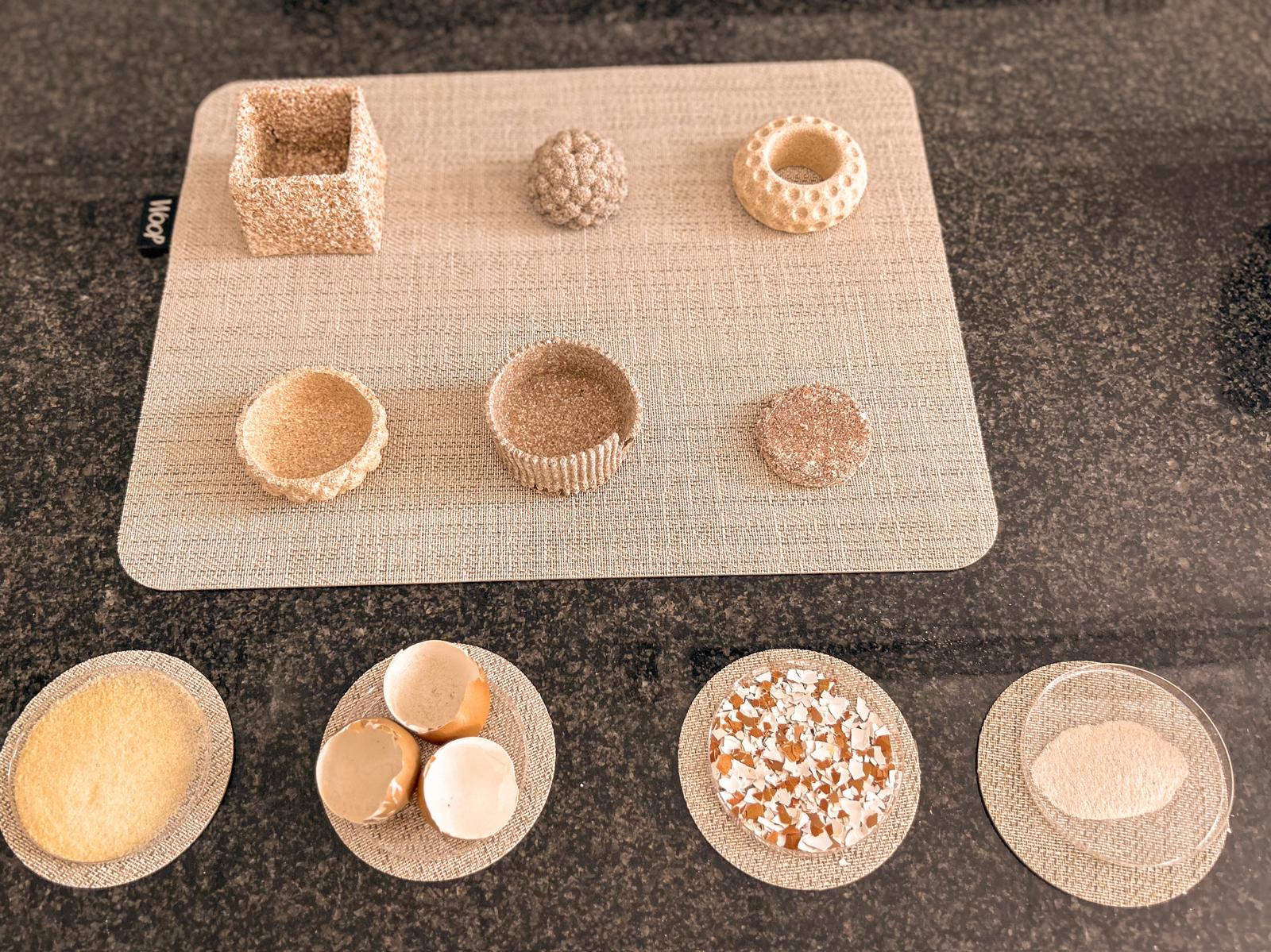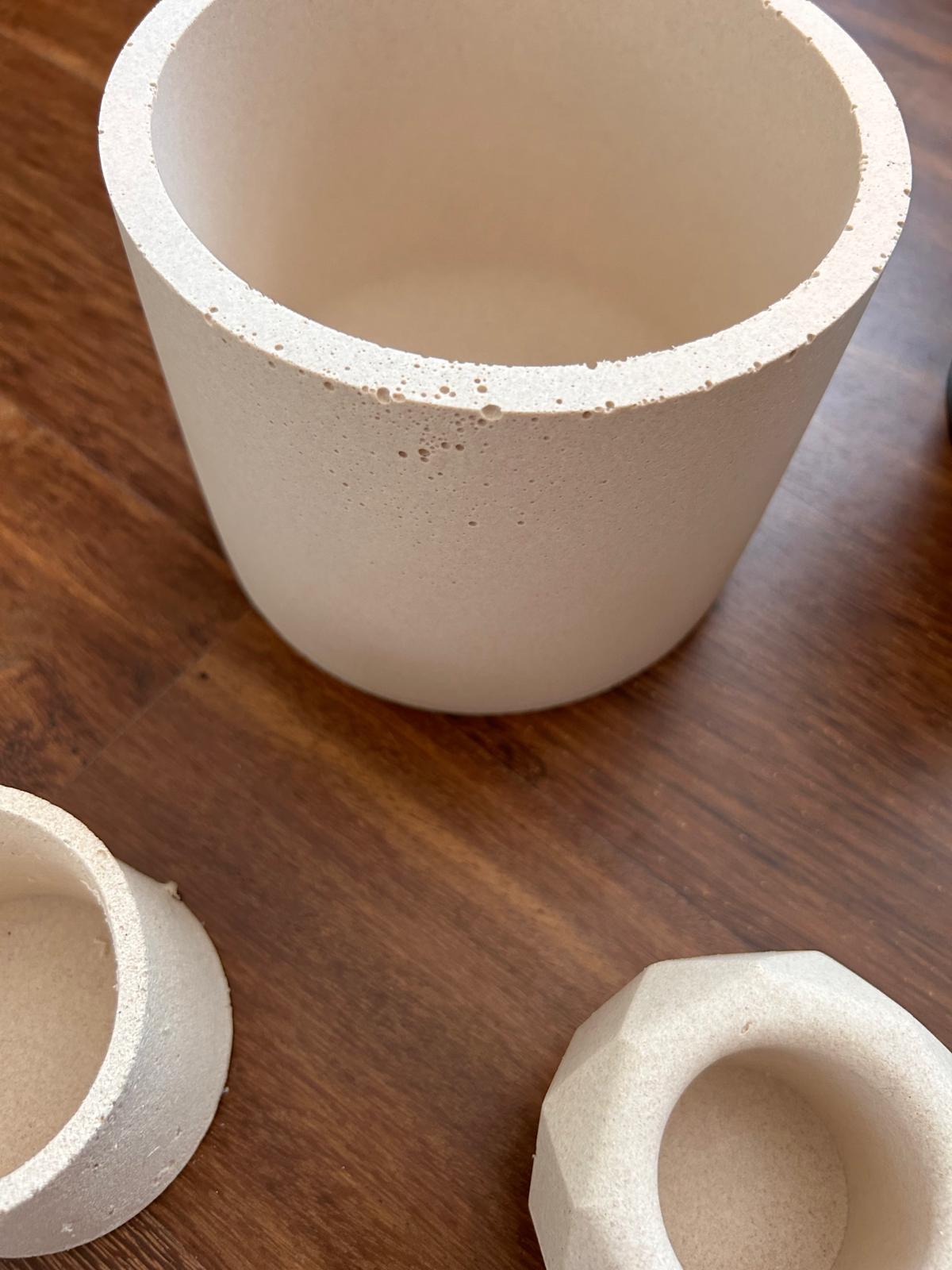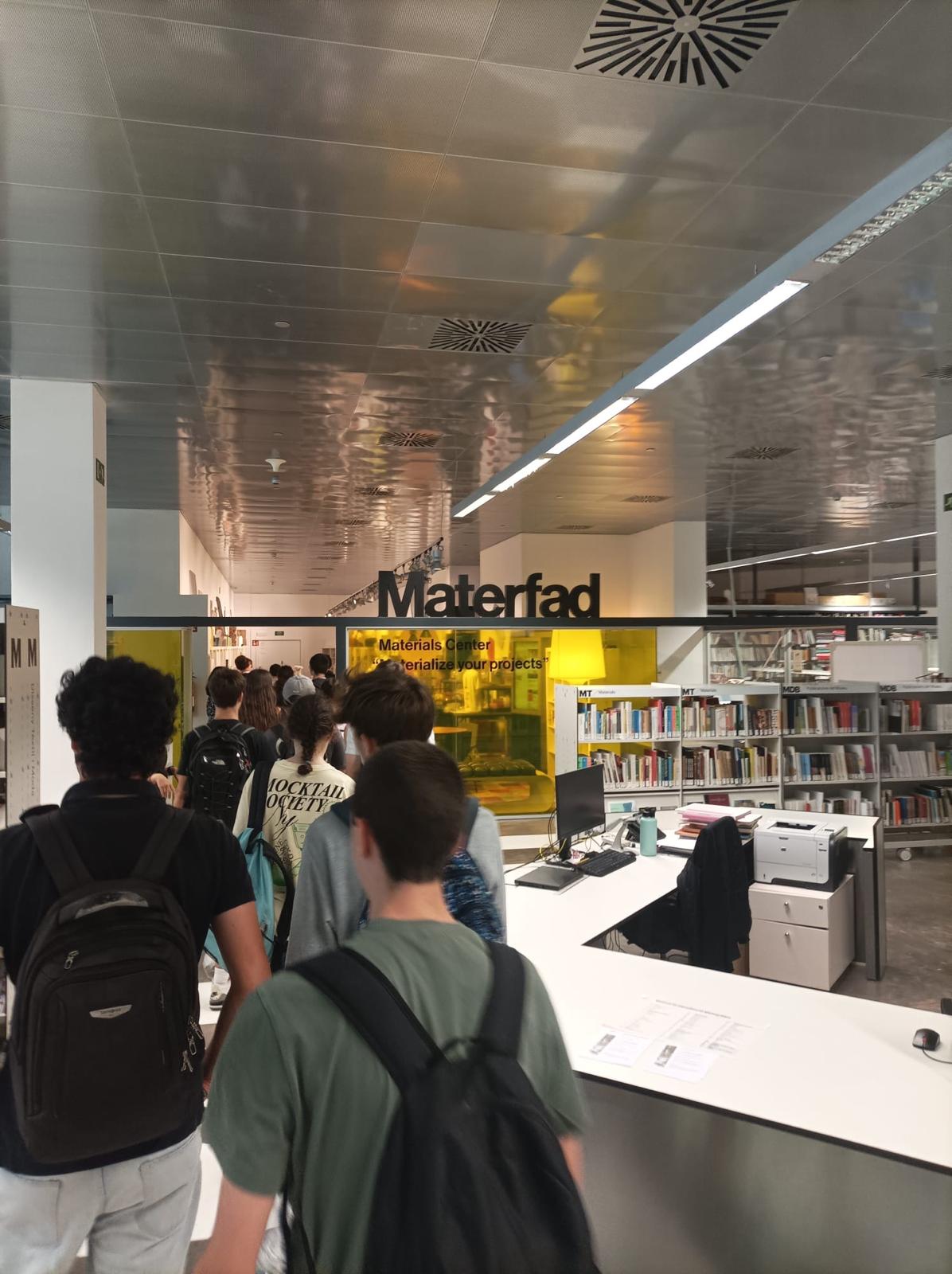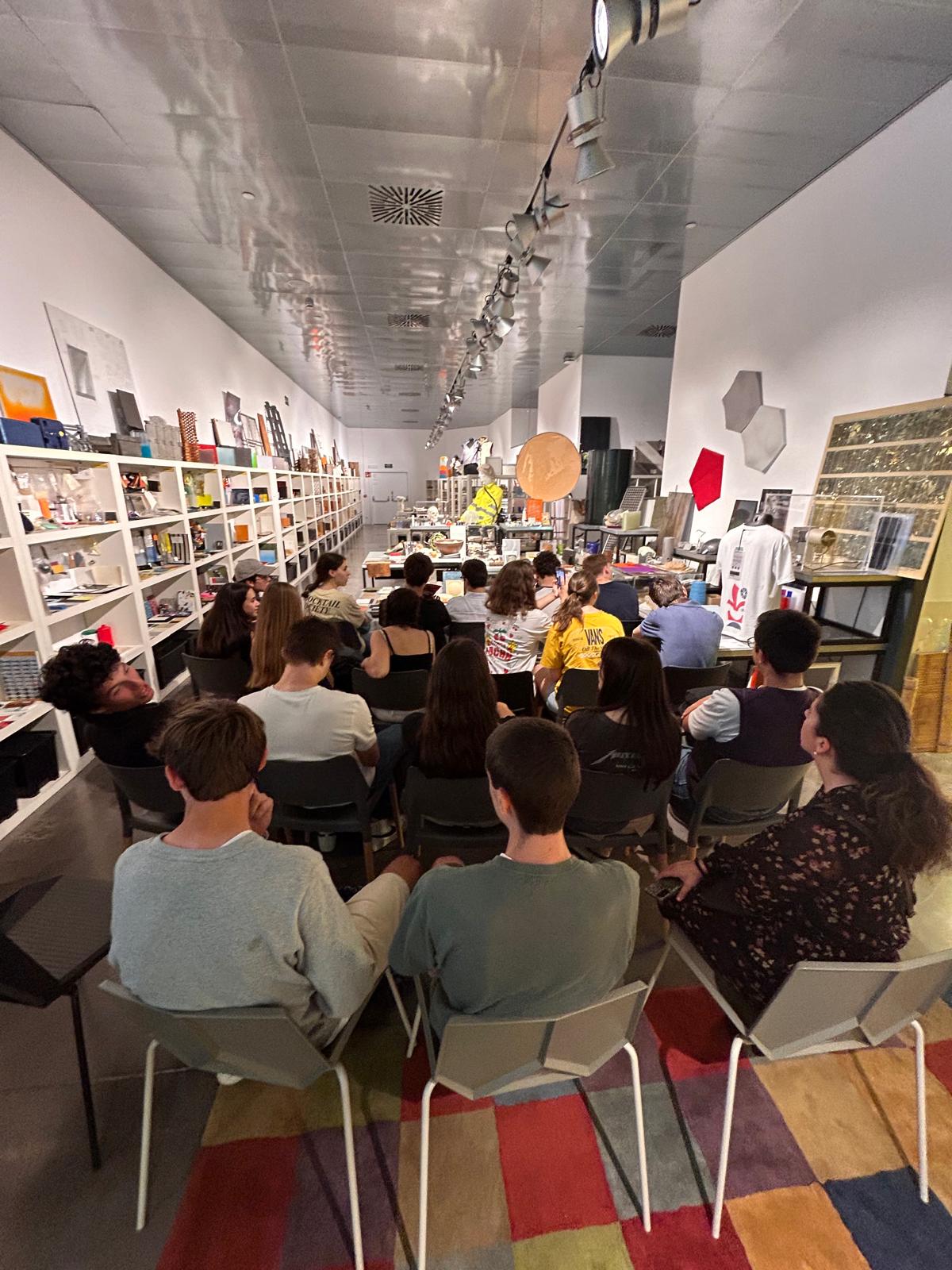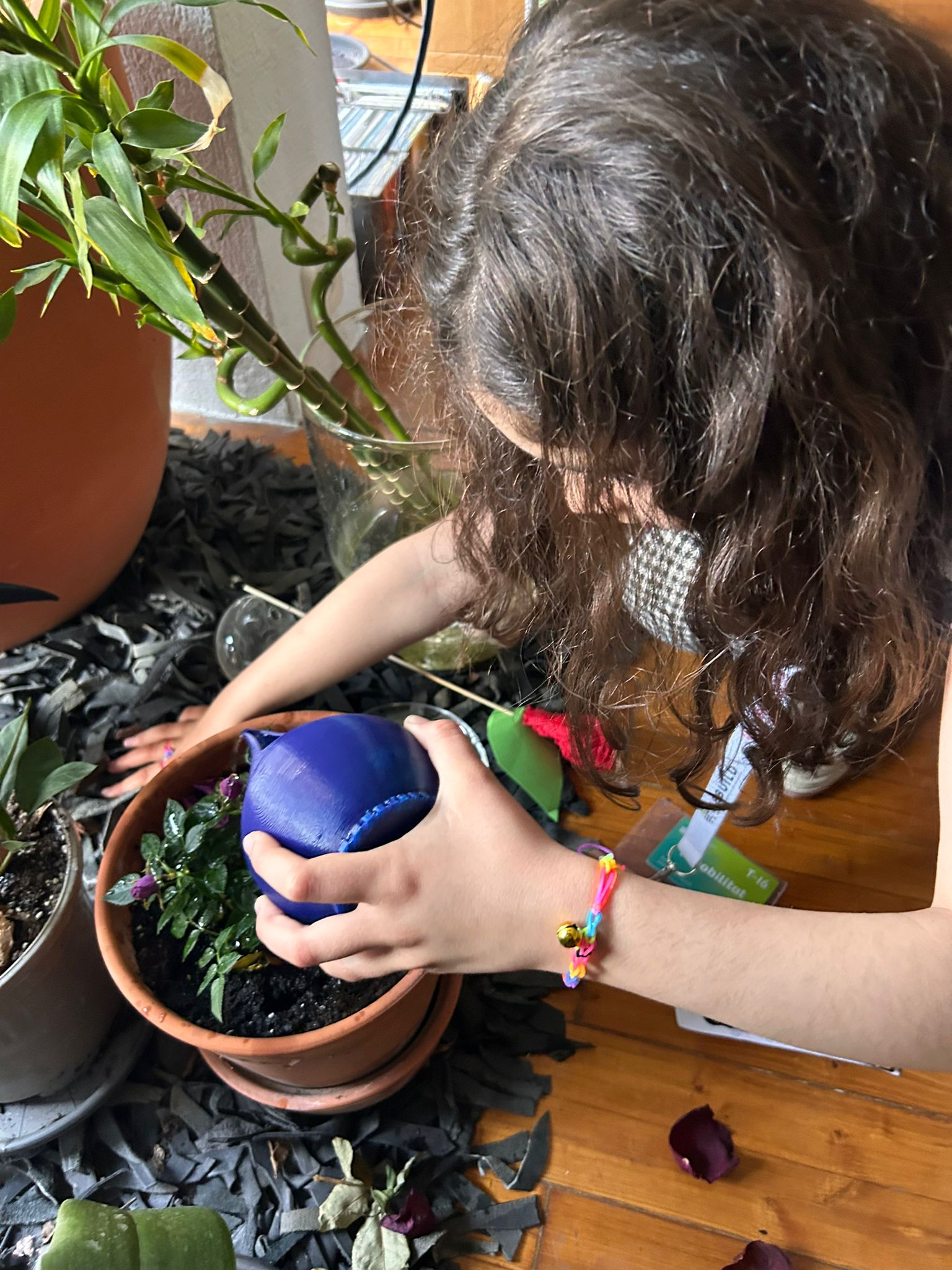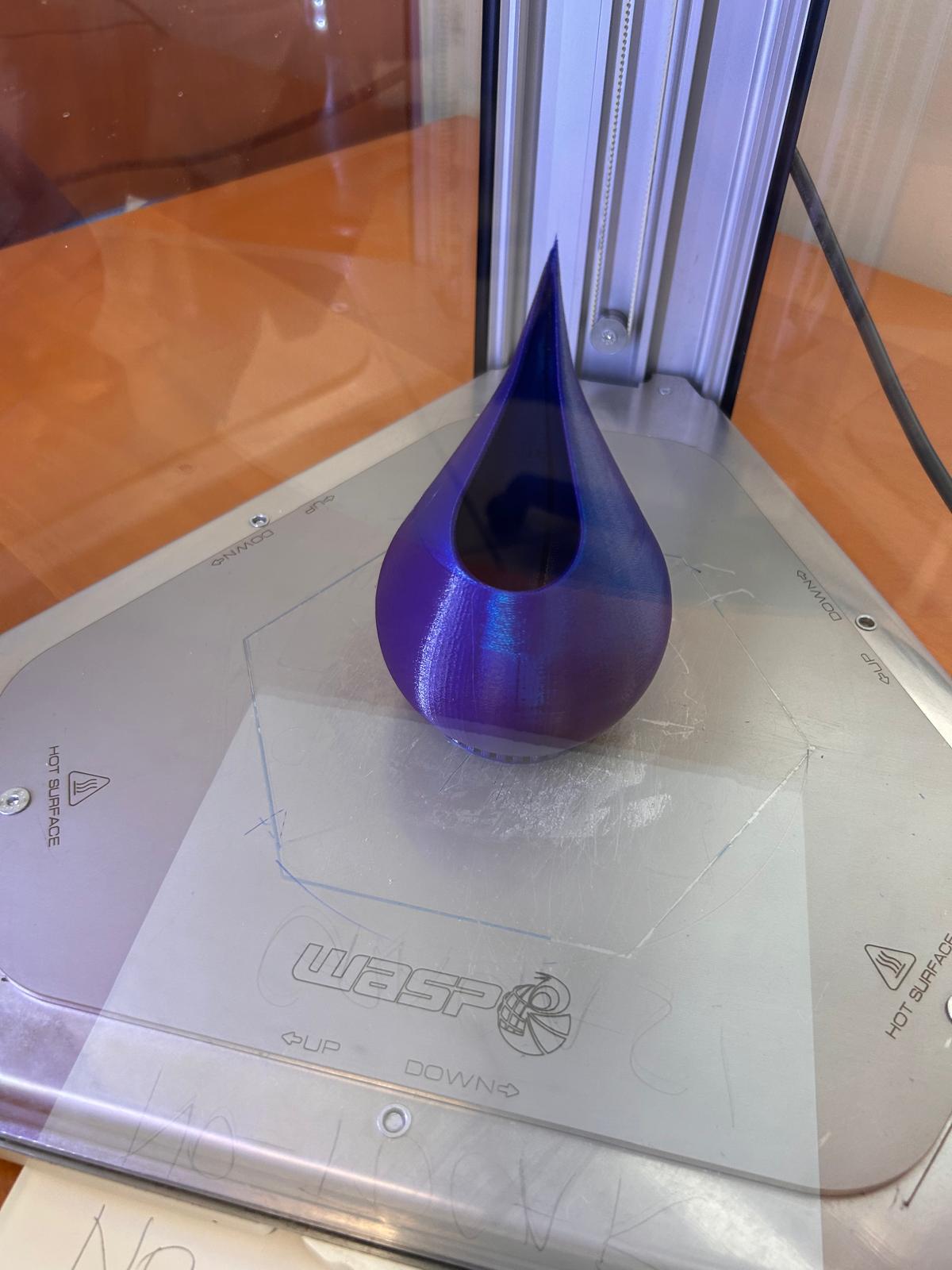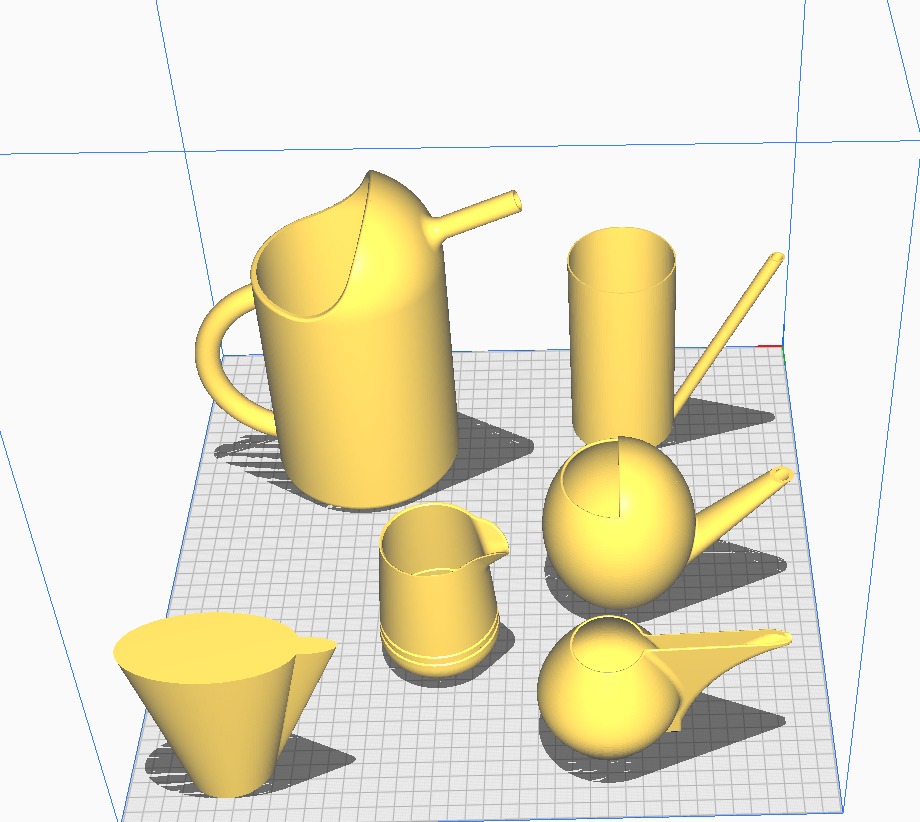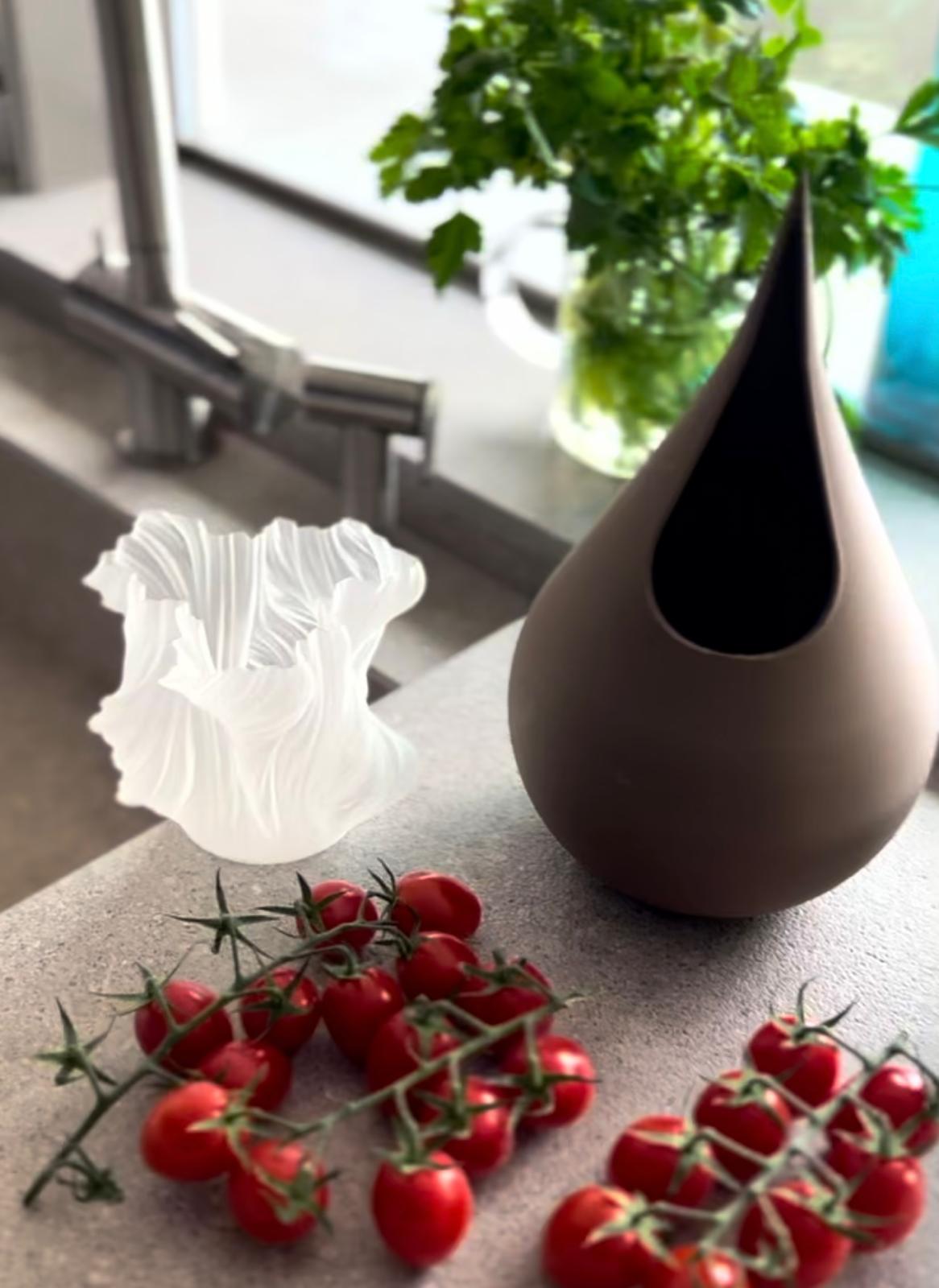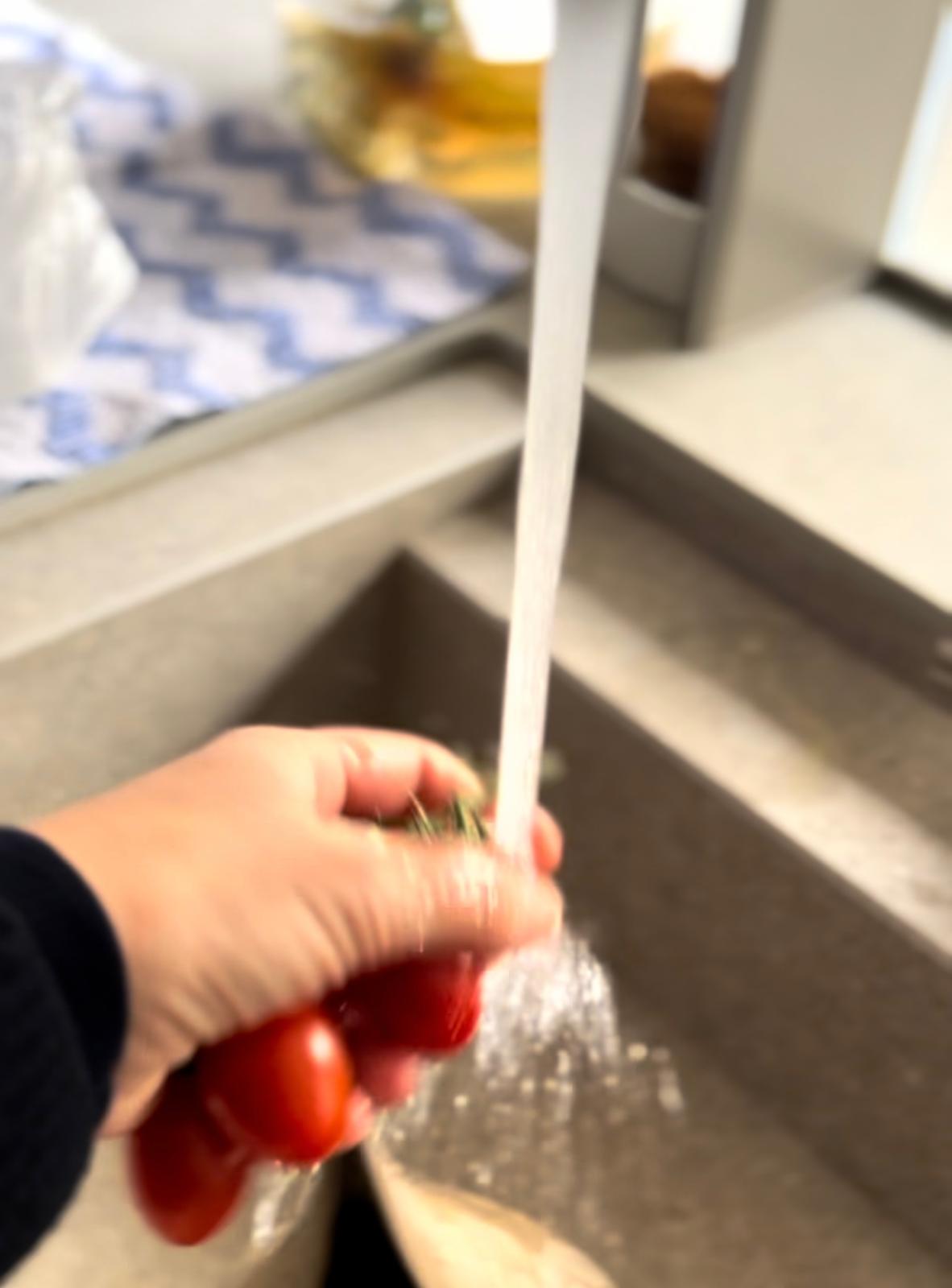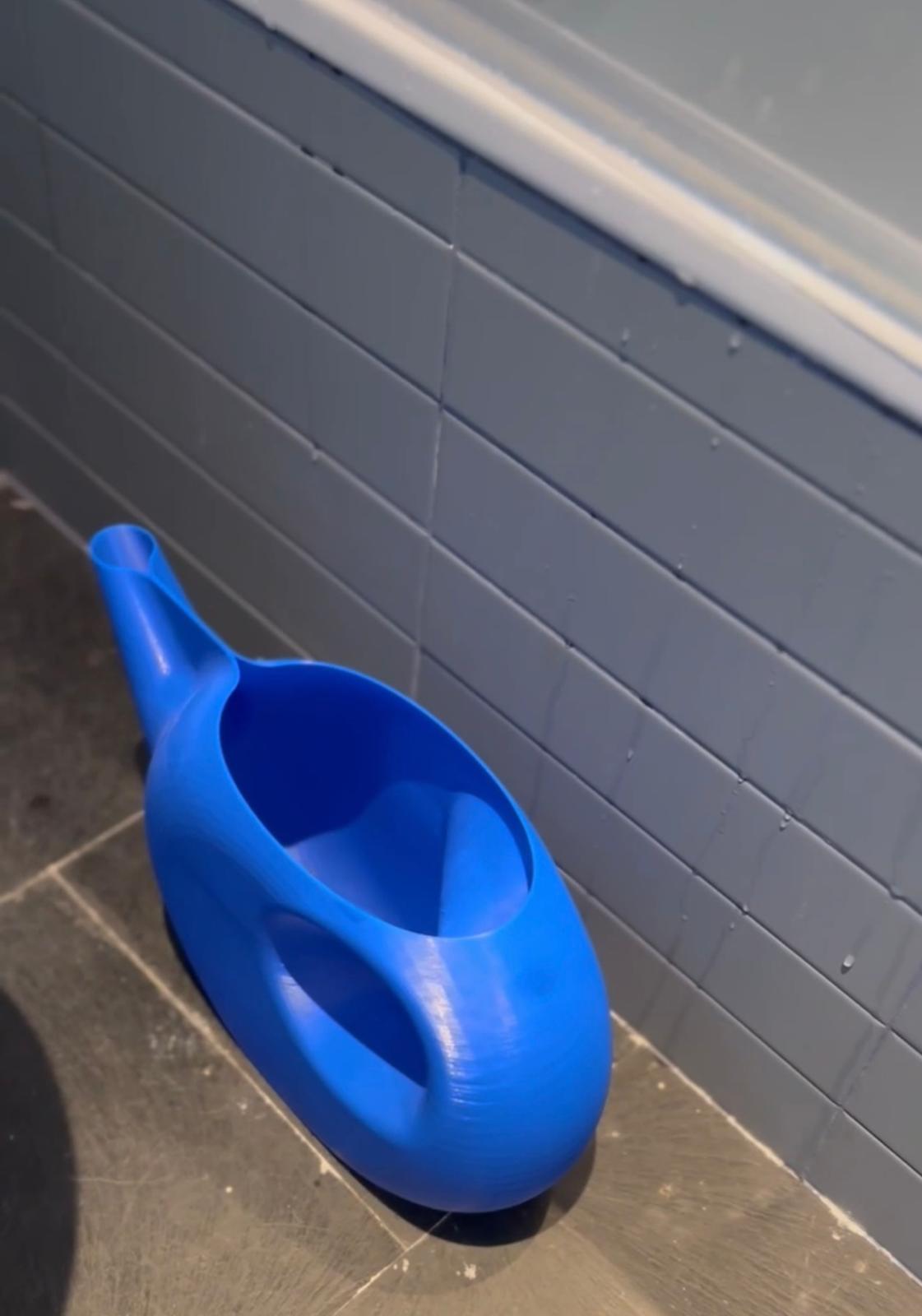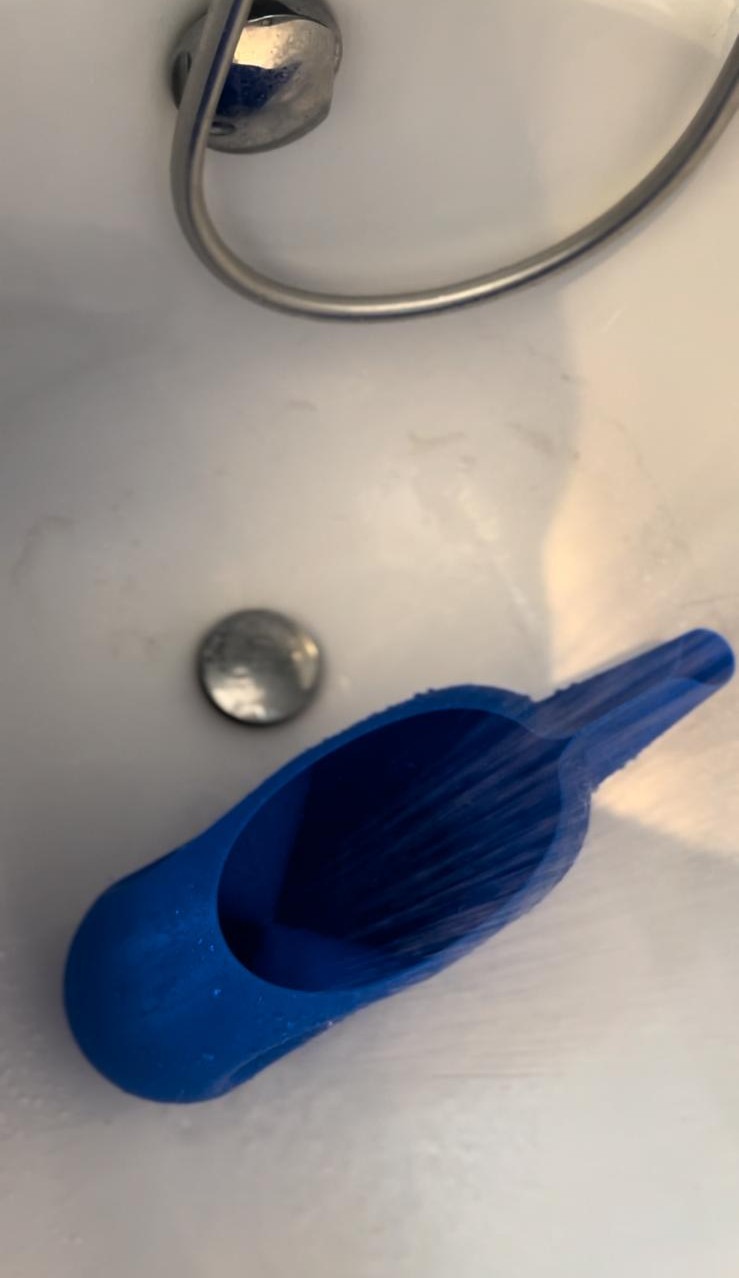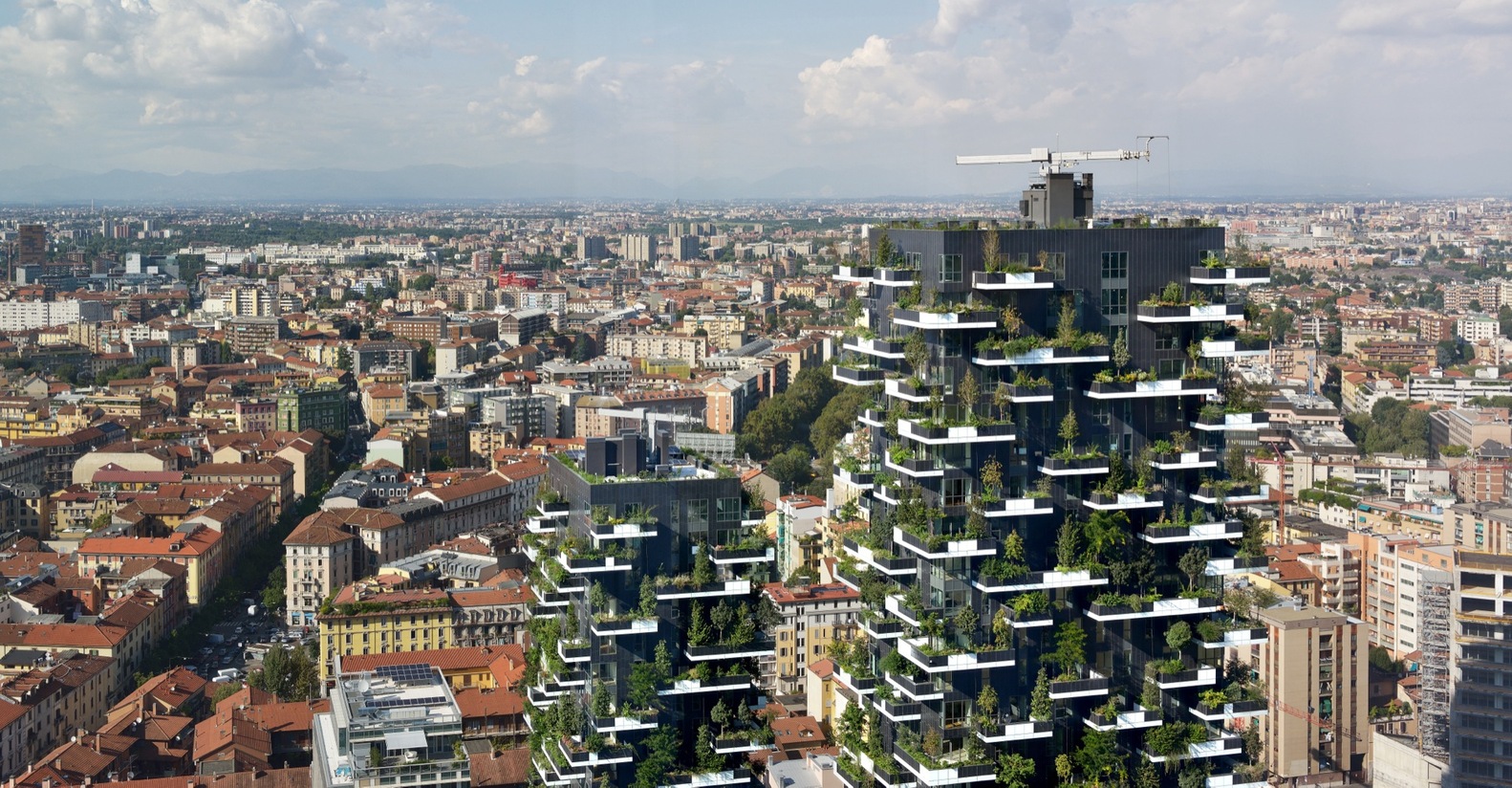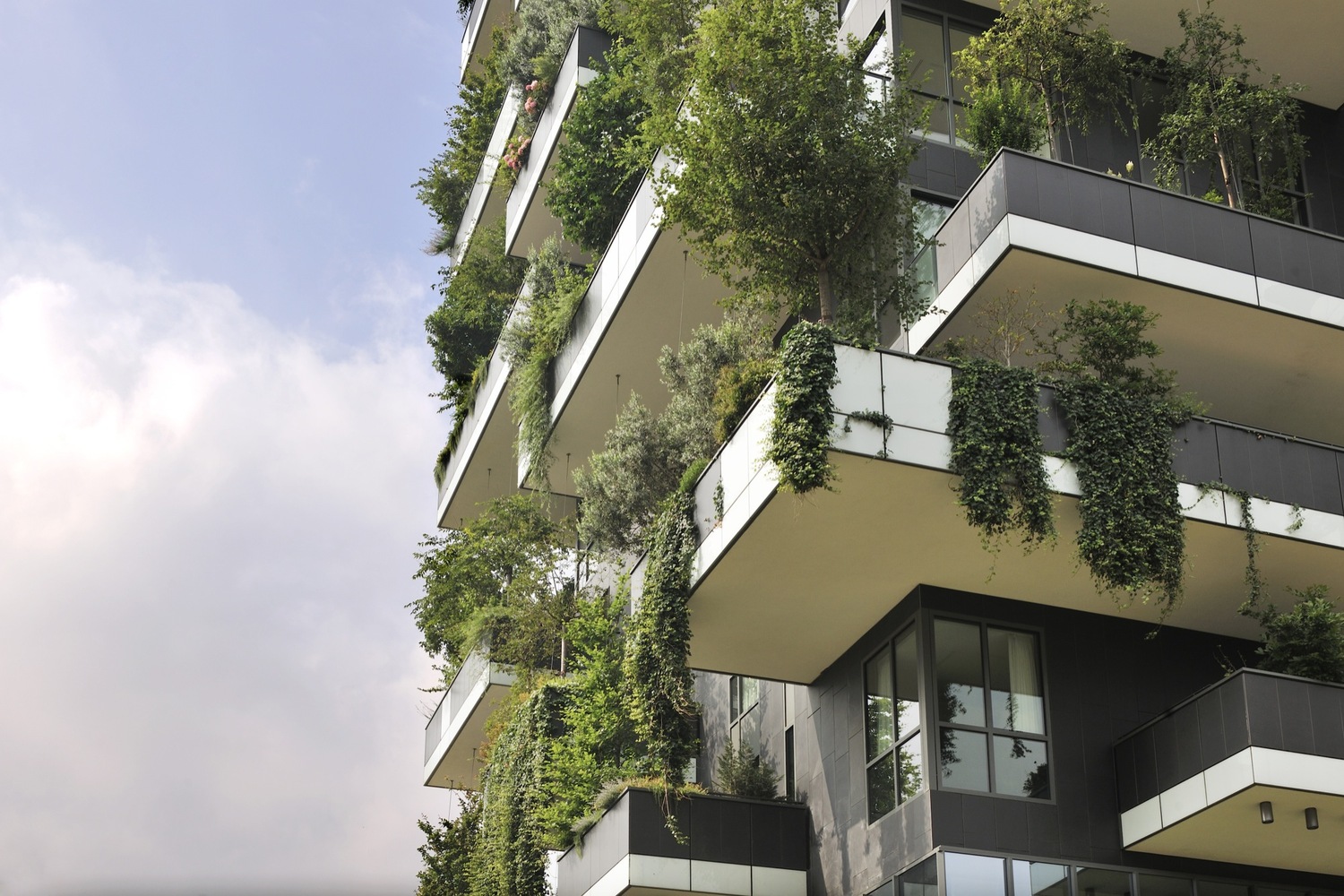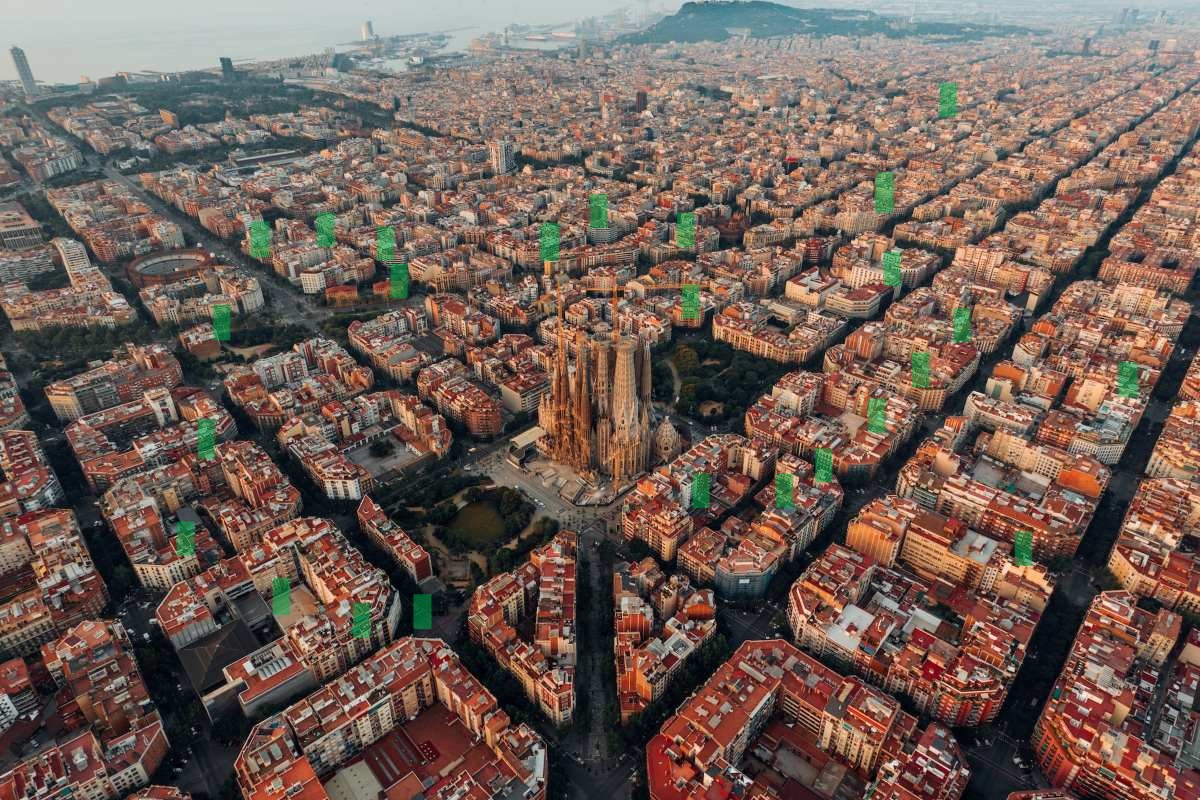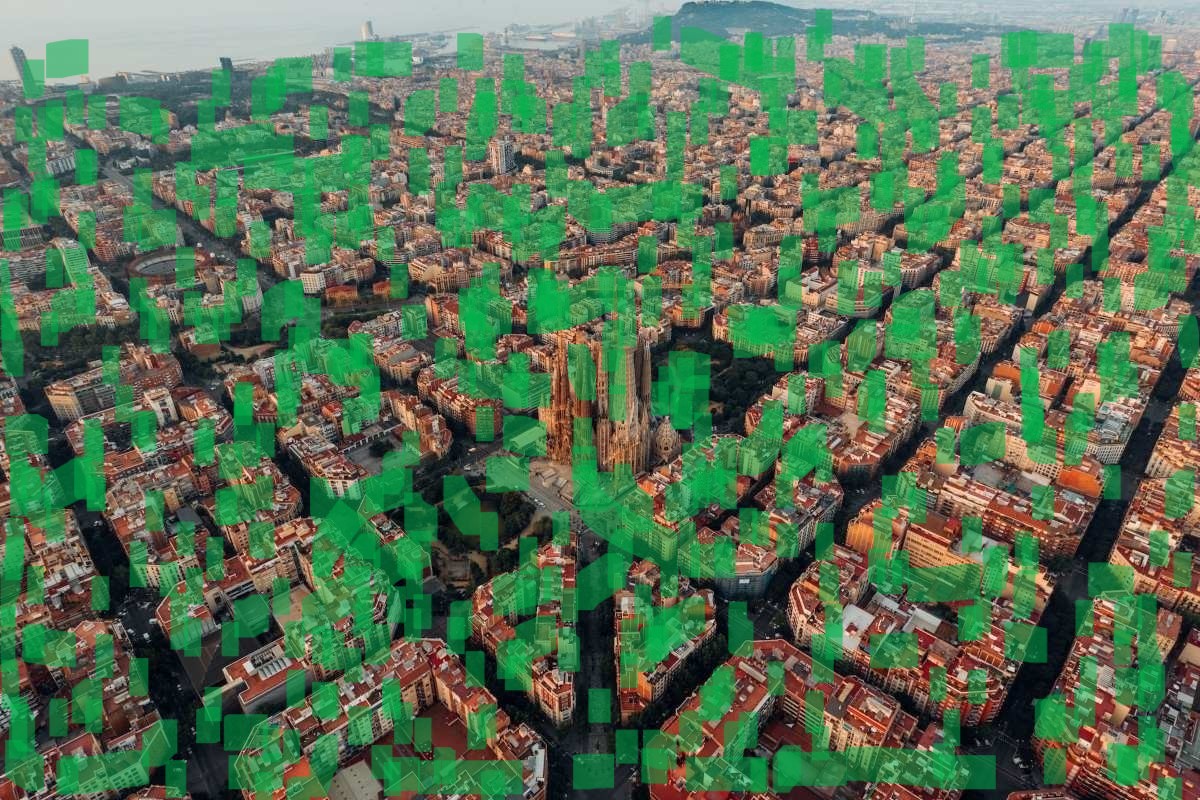Reconnecting with nature
Barcelona Verde
Barcelona Verde. Put a tree on your balcony and help your city breathe!
Barcelona Verde is a citizen initiative that invites residents to plant a tree on their balcony to improve air quality and create green urban spaces. The city could gain 800,000 new trees.
The campaign was launched by mothers and children from the Istituto Italiano Statale Comprensivo di Barcellona.
An educational blog guides citizens on planting trees from seeds and watering them with household wastewater, making it easy for everyone to join the movement.
Together, we can do BCN greener.
The campaign was launched by mothers and children from the Istituto Italiano Statale Comprensivo di Barcellona.
An educational blog guides citizens on planting trees from seeds and watering them with household wastewater, making it easy for everyone to join the movement.
Together, we can do BCN greener.
Spain
Local
Barcelona city
Mainly urban
It refers to other types of transformations (soft investment)
Yes
2024-12-31
No
No
No
As an individual
OVERALL AIM:
Transform Barcelona’s balconies into green spaces by encouraging citizens to plant trees, creating a healthier, more sustainable, and biodiverse urban environment.
TARGET GROUP(S):
- Citizens of all ages, with a focus on families and children.
- Schools and educational institutions.
- Local communities and residents.
SPECIFIC OBJECTIVE(S):
- Plant 800,000 trees on balconies to improve air quality and create green microenvironments across the city.
- Educate citizens, especially children, on sustainability and urban greening through practical, hands-on activities.
- Foster community involvement and promote environmental responsibility.
- Encourage the use of household wastewater for irrigation as part of a circular approach to water use.
ACHIEVED OUTCOMES:
- Launch of the campaign “Put a Tree on Your Balcony! Barcelona Verde: Help Your City Breathe,” initiated by a group of mothers and children from the Istituto Italiano Statale Comprensivo di Barcelona, with support from Casa degli Italiani and Cascos Verdes.
- Creation of an educational blog offering step-by-step guidance on planting and maintaining trees on balconies, from growing a tree from a seed to using wastewater for irrigation, create a pot with waste.
- Active participation of families and children, fostering environmental awareness and hands-on learning.
- Development of a replicable model for community-driven urban greening, inspiring other neighborhoods and cities.
The project exemplifies how simple, collective actions can lead to significant environmental and social impact, turning balconies into green lungs that enhance both the beauty and sustainability of the urban landscape.
Transform Barcelona’s balconies into green spaces by encouraging citizens to plant trees, creating a healthier, more sustainable, and biodiverse urban environment.
TARGET GROUP(S):
- Citizens of all ages, with a focus on families and children.
- Schools and educational institutions.
- Local communities and residents.
SPECIFIC OBJECTIVE(S):
- Plant 800,000 trees on balconies to improve air quality and create green microenvironments across the city.
- Educate citizens, especially children, on sustainability and urban greening through practical, hands-on activities.
- Foster community involvement and promote environmental responsibility.
- Encourage the use of household wastewater for irrigation as part of a circular approach to water use.
ACHIEVED OUTCOMES:
- Launch of the campaign “Put a Tree on Your Balcony! Barcelona Verde: Help Your City Breathe,” initiated by a group of mothers and children from the Istituto Italiano Statale Comprensivo di Barcelona, with support from Casa degli Italiani and Cascos Verdes.
- Creation of an educational blog offering step-by-step guidance on planting and maintaining trees on balconies, from growing a tree from a seed to using wastewater for irrigation, create a pot with waste.
- Active participation of families and children, fostering environmental awareness and hands-on learning.
- Development of a replicable model for community-driven urban greening, inspiring other neighborhoods and cities.
The project exemplifies how simple, collective actions can lead to significant environmental and social impact, turning balconies into green lungs that enhance both the beauty and sustainability of the urban landscape.
Urban Greening
Air Quality
Community Engagement
Environmental Education
Sustainable Living
- URBAN REFORESTATION & AIR QUALITY IMPROVEMENT:
The primary goal is to introduce 800,000 trees across balconies in Barcelona, creating a vast network of urban micro-forests. This enhances air quality, reduces CO2, increases oxygen levels, and mitigates pollution, fostering a healthier environment. The project demonstrates that even small spaces, like balconies, can contribute to large-scale environmental improvements.
-WASTE REDUCTION & CIRCULAR ECONOMY:
The project promotes biodegradable and recycled materials such as PLA bioplastics and eggshell bioceramic pots. Citizens are encouraged to reuse household wastewater for irrigation, reducing water waste.
- URBAN BIODIVERSITY ENHANCEMENT:
Transforming balconies into green ecosystems attracts pollinators such as bees, butterflies, and birds, enriching urban biodiversity. This fosters ecological balance, turning sterile city spaces into thriving habitats.
- CITIZEN EMPOWERMENT & ENVIRONMENTAL EDUCATION:
Through workshops and an educational blog, residents—especially children—learn sustainable practices, from planting trees from seeds to using wastewater for irrigation. This knowledge transfer ensures long-term environmental stewardship and fosters grassroots change.
- SUSTAINABLE URBAN TRANSFORMATION:
The project demonstrates that sustainability is achievable through small, collective actions. By mobilizing families and local communities, Barcelona Verde serves as a replicable model for cities globally, proving that individuals can collectively reshape urban environments into greener, healthier spaces.
- EXEMPLARY ASPECTS:
Barcelona Verde stands out as a low-cost, scalable solution that merges citizen action with sustainability goals. It shows that bottom-up urban greening can improve air quality, enhance biodiversity, reduce waste, and foster community resilience, making it a benchmark for other cities seeking eco-friendly urban transformations.
The primary goal is to introduce 800,000 trees across balconies in Barcelona, creating a vast network of urban micro-forests. This enhances air quality, reduces CO2, increases oxygen levels, and mitigates pollution, fostering a healthier environment. The project demonstrates that even small spaces, like balconies, can contribute to large-scale environmental improvements.
-WASTE REDUCTION & CIRCULAR ECONOMY:
The project promotes biodegradable and recycled materials such as PLA bioplastics and eggshell bioceramic pots. Citizens are encouraged to reuse household wastewater for irrigation, reducing water waste.
- URBAN BIODIVERSITY ENHANCEMENT:
Transforming balconies into green ecosystems attracts pollinators such as bees, butterflies, and birds, enriching urban biodiversity. This fosters ecological balance, turning sterile city spaces into thriving habitats.
- CITIZEN EMPOWERMENT & ENVIRONMENTAL EDUCATION:
Through workshops and an educational blog, residents—especially children—learn sustainable practices, from planting trees from seeds to using wastewater for irrigation. This knowledge transfer ensures long-term environmental stewardship and fosters grassroots change.
- SUSTAINABLE URBAN TRANSFORMATION:
The project demonstrates that sustainability is achievable through small, collective actions. By mobilizing families and local communities, Barcelona Verde serves as a replicable model for cities globally, proving that individuals can collectively reshape urban environments into greener, healthier spaces.
- EXEMPLARY ASPECTS:
Barcelona Verde stands out as a low-cost, scalable solution that merges citizen action with sustainability goals. It shows that bottom-up urban greening can improve air quality, enhance biodiversity, reduce waste, and foster community resilience, making it a benchmark for other cities seeking eco-friendly urban transformations.
- GREENING THE URBAN LANDSCAPE:
The project aims to transform Barcelona’s balconies into lush green spaces, adding 800,000 trees to soften the city’s rigid concrete and steel skyline. This creates a visually vibrant and seasonally changing urban fabric, blending natural beauty with urban design.
- LIVING FACADES & PERSONAL EXPRESSION:
Balconies become personalized vertical gardens, allowing residents to design their green spaces according to their taste, fostering artistic expression and creative interventions on the facades. These small, curated ecosystems contribute to a collective urban aesthetic.
- CONNECTION TO NATURE IN DAILY LIFE:
Residents experience an improved quality of life by integrating greenery into their everyday spaces. Even small balconies become oases of calm, offering visual pleasure, natural shade, and a refuge from urban stress, enhancing emotional well-being.
- CULTURAL & COMMUNITY ENGAGEMENT:
The project incorporates workshops and participatory activities, particularly involving children and families, encouraging local creativity and environmental awareness. Public participation fosters cultural pride and a sense of collective ownership, turning balconies into symbols of community resilience and sustainable culture.
- SEASONAL BEAUTY & BIODIVERSITY:
The trees and plants introduce seasonal colors and wildlife, creating an evolving natural spectacle throughout the year. Birds, butterflies, and pollinators return to the city, enriching urban life with sensory and emotional experiences tied to nature.
- EXEMPLARY ASPECTS:
Barcelona Verde redefines urban aesthetics by showing how small-scale citizen-driven interventions can transform the visual and experiential quality of a city. It demonstrates the power of design to merge beauty, sustainability, and community well-being, offering a scalable and replicable model.
The project aims to transform Barcelona’s balconies into lush green spaces, adding 800,000 trees to soften the city’s rigid concrete and steel skyline. This creates a visually vibrant and seasonally changing urban fabric, blending natural beauty with urban design.
- LIVING FACADES & PERSONAL EXPRESSION:
Balconies become personalized vertical gardens, allowing residents to design their green spaces according to their taste, fostering artistic expression and creative interventions on the facades. These small, curated ecosystems contribute to a collective urban aesthetic.
- CONNECTION TO NATURE IN DAILY LIFE:
Residents experience an improved quality of life by integrating greenery into their everyday spaces. Even small balconies become oases of calm, offering visual pleasure, natural shade, and a refuge from urban stress, enhancing emotional well-being.
- CULTURAL & COMMUNITY ENGAGEMENT:
The project incorporates workshops and participatory activities, particularly involving children and families, encouraging local creativity and environmental awareness. Public participation fosters cultural pride and a sense of collective ownership, turning balconies into symbols of community resilience and sustainable culture.
- SEASONAL BEAUTY & BIODIVERSITY:
The trees and plants introduce seasonal colors and wildlife, creating an evolving natural spectacle throughout the year. Birds, butterflies, and pollinators return to the city, enriching urban life with sensory and emotional experiences tied to nature.
- EXEMPLARY ASPECTS:
Barcelona Verde redefines urban aesthetics by showing how small-scale citizen-driven interventions can transform the visual and experiential quality of a city. It demonstrates the power of design to merge beauty, sustainability, and community well-being, offering a scalable and replicable model.
- ACCESSIBILITY & AFFORDABILITY:
The project is designed to be accessible to all residents, regardless of their income level. Planting a tree on a balcony is a low-cost, easy-to-implement action, made even more affordable through the use of recycled materials (e.g., eggshell bioceramics, upcycled pots) and guidance on using household wastewater for irrigation.
→ It democratizes green urban living, showing that sustainable improvements can be both affordable and achievable for every citizen.
- INCLUSIVE PARTICIPATION:
The campaign actively engages diverse social groups, including children, families, elderly residents, and school communities. Special focus is placed on educational workshops with schoolchildren, encouraging intergenerational collaboration and empowering young people to lead green transformations.
→ The participatory approach fosters a culture of shared responsibility, ensuring that all voices—regardless of age or background.
- COMMUNITY-DRIVEN MODEL:
Rather than a top-down initiative, Barcelona Verde is citizen-led, started by a group of mothers and children. This grassroots governance model encourages residents to take ownership of their surroundings.
→ It promotes a new societal model, where urban transformation is driven collectively from the bottom up, empowering communities as key actors in building a greener city.
- DESIGN-FOR-ALL PRINCIPLE:
The project embraces a flexible design approach, allowing each participant to personalize their green space based on their balcony size, preferences, and capabilities.
→ It demonstrates how design solutions can be adaptable and inclusive.
- SOCIAL CONNECTION & INTEGRATION:
Green balconies foster social bonds—neighbors connect over shared green initiatives, and balconies evolve into communal spaces visible to all. encouraging dialogue and cooperation across social lines.
→ It turns private spaces into visible acts of collective care, bridging social divides and cultivating a more integrated.
The project is designed to be accessible to all residents, regardless of their income level. Planting a tree on a balcony is a low-cost, easy-to-implement action, made even more affordable through the use of recycled materials (e.g., eggshell bioceramics, upcycled pots) and guidance on using household wastewater for irrigation.
→ It democratizes green urban living, showing that sustainable improvements can be both affordable and achievable for every citizen.
- INCLUSIVE PARTICIPATION:
The campaign actively engages diverse social groups, including children, families, elderly residents, and school communities. Special focus is placed on educational workshops with schoolchildren, encouraging intergenerational collaboration and empowering young people to lead green transformations.
→ The participatory approach fosters a culture of shared responsibility, ensuring that all voices—regardless of age or background.
- COMMUNITY-DRIVEN MODEL:
Rather than a top-down initiative, Barcelona Verde is citizen-led, started by a group of mothers and children. This grassroots governance model encourages residents to take ownership of their surroundings.
→ It promotes a new societal model, where urban transformation is driven collectively from the bottom up, empowering communities as key actors in building a greener city.
- DESIGN-FOR-ALL PRINCIPLE:
The project embraces a flexible design approach, allowing each participant to personalize their green space based on their balcony size, preferences, and capabilities.
→ It demonstrates how design solutions can be adaptable and inclusive.
- SOCIAL CONNECTION & INTEGRATION:
Green balconies foster social bonds—neighbors connect over shared green initiatives, and balconies evolve into communal spaces visible to all. encouraging dialogue and cooperation across social lines.
→ It turns private spaces into visible acts of collective care, bridging social divides and cultivating a more integrated.
Imagine a Barcelona where every balcony becomes a small ecosystem, with lush trees that cool the air, reduce noise, and create natural shade. The building facades would transform into living vertical gardens, bursting with colors that change with the seasons: vibrant greens in spring and summer, golden and reddish hues in autumn. Urban biodiversity would flourish, with birds, butterflies, and bees visiting the balconies. The city would feel fresher, with much cleaner air and a calmer, more natural atmosphere. These green balconies could even be connected to rooftop gardens and inner courtyards, creating a continuous green lung throughout the city.
The Barcelona Verde project exemplifies the New European Bauhaus principles by combining sustainability, aesthetics, and inclusion, driven by citizen participation:
• SUSTAINABILITY: Encourages planting 800,000 trees on balconies, improving air quality, reducing pollution, and promoting biodiversity, while reusing household wastewater and using biomaterials.
• AESTHETICS: Transforms balconies into green, seasonal micro-gardens, integrating nature into the urban landscape, enhancing well-being and visual appeal.
• INCLUSION: Initiated by families and schoolchildren, supported by local organizations, involving residents across generations through workshops and collaborative tree-planting.
CITIZEN & CIVIL SOCIETY INVOLVEMENT:
• Families and children lead the project, learning to plant trees and reuse water.
• Workshops empower residents to create and personalize their green spaces, fostering community pride and responsibility.
• Community feedback shapes the project, ensuring practical, accessible solutions for all.
EXEMPLARY IMPACT:
• Bottom-up approach: Residents transform their homes into green lungs, showing how small actions can lead to city-wide ecological change.
• Replicable model: Barcelona Verde serves as an innovative blueprint for greener, citizen-driven cities.
The Barcelona Verde project exemplifies the New European Bauhaus principles by combining sustainability, aesthetics, and inclusion, driven by citizen participation:
• SUSTAINABILITY: Encourages planting 800,000 trees on balconies, improving air quality, reducing pollution, and promoting biodiversity, while reusing household wastewater and using biomaterials.
• AESTHETICS: Transforms balconies into green, seasonal micro-gardens, integrating nature into the urban landscape, enhancing well-being and visual appeal.
• INCLUSION: Initiated by families and schoolchildren, supported by local organizations, involving residents across generations through workshops and collaborative tree-planting.
CITIZEN & CIVIL SOCIETY INVOLVEMENT:
• Families and children lead the project, learning to plant trees and reuse water.
• Workshops empower residents to create and personalize their green spaces, fostering community pride and responsibility.
• Community feedback shapes the project, ensuring practical, accessible solutions for all.
EXEMPLARY IMPACT:
• Bottom-up approach: Residents transform their homes into green lungs, showing how small actions can lead to city-wide ecological change.
• Replicable model: Barcelona Verde serves as an innovative blueprint for greener, citizen-driven cities.
The Barcelona Verde project actively engaged diverse stakeholders across local, regional, and professional levels, ensuring a collaborative approach in both design and implementation:
LOCAL LEVEL:
• Families, Children & Schools (Istituto Italiano Statale Comprensivo di Barcelona):
o Participated in workshops and hands-on activities involving tree planting, crafting plastic-free pots, and developing sustainable watering solutions.
o Gained practical knowledge and environmental awareness.
• Urban Farming Cooperative Las Gardenias (Casa Orlandai – Sarrià-Sant Gervasi):
o Supported tree planting workshops, connecting children with urban agriculture and green practices.
REGIONAL LEVEL:
• MATER FAD – Materials Research Center:
o Hosted visits for high school students to explore sustainable materials and circular economy concepts.
o Led workshops on making plastic-free pots using eggshells and gelatin.
• Noumena Data (Technology & Data Analysis Firm):
o Introduced students to data visualization, drone mapping, and AI-powered urban studies to analyze the vegetation on city balconies.
PROFESSIONAL & ACADEMIC COLLABORATIONS:
• Professor Daniel Gamper (Philosophy):
o Led philosophical sessions with students, reflecting on balconies as spaces bridging private and public life, promoting critical thinking.
SUPPORTING ORGANIZATIONS:
• Casa degli Italiani: Sponsored the project as a non-profit association, providing key support for the campaign’s success.
• Cascos Verdes: Acted as a sponsor and mentor, helping guide the project and connect it with relevant local networks.
CITIZEN PARTICIPATION:
• Citizens will follow the step-by-step guides, replicate the methods at home, and register their trees via the app.
• Citizens will contribute to data collection on balcony vegetation, strengthening community involvement and environmental awareness.
LOCAL LEVEL:
• Families, Children & Schools (Istituto Italiano Statale Comprensivo di Barcelona):
o Participated in workshops and hands-on activities involving tree planting, crafting plastic-free pots, and developing sustainable watering solutions.
o Gained practical knowledge and environmental awareness.
• Urban Farming Cooperative Las Gardenias (Casa Orlandai – Sarrià-Sant Gervasi):
o Supported tree planting workshops, connecting children with urban agriculture and green practices.
REGIONAL LEVEL:
• MATER FAD – Materials Research Center:
o Hosted visits for high school students to explore sustainable materials and circular economy concepts.
o Led workshops on making plastic-free pots using eggshells and gelatin.
• Noumena Data (Technology & Data Analysis Firm):
o Introduced students to data visualization, drone mapping, and AI-powered urban studies to analyze the vegetation on city balconies.
PROFESSIONAL & ACADEMIC COLLABORATIONS:
• Professor Daniel Gamper (Philosophy):
o Led philosophical sessions with students, reflecting on balconies as spaces bridging private and public life, promoting critical thinking.
SUPPORTING ORGANIZATIONS:
• Casa degli Italiani: Sponsored the project as a non-profit association, providing key support for the campaign’s success.
• Cascos Verdes: Acted as a sponsor and mentor, helping guide the project and connect it with relevant local networks.
CITIZEN PARTICIPATION:
• Citizens will follow the step-by-step guides, replicate the methods at home, and register their trees via the app.
• Citizens will contribute to data collection on balcony vegetation, strengthening community involvement and environmental awareness.
The Barcelona Verde project integrated multiple disciplines to create an urban greening initiative with a focus on sustainability, education, and community engagement. Key fields included:
• ENVIRONMENTAL SUSTAINABILITY:
Promoted green infrastructure, biodiversity, and circular economy practices through tree planting and eco-friendly materials, in collaboration with MATER FAD.
• URBAN PLANNING AND ARCHITECTURE:
Focused on transforming urban spaces with green balconies and vertical gardens, involving local planners and tech companies like Noumena Data for data collection and mapping.
• EDUCATION AND COMMUNITY ENGAGEMENT:
Involved children and communities in hands-on workshops about planting, sustainability, and the circular economy, supported by non-profits like Casa degli Italiani and Cascos Verdes.
• PHILOSOPHY AND SOCIAL SCIENCES: Encouraged philosophical reflection on urban space, community, and sustainability through workshops with thinkers like Professor Daniel Gamper.
• TECHNOLOGY AND PRODUCT DESIGN:
Developed practical, sustainable products (e.g., 3D-printed watering cans) for everyday use, promoting eco-friendly materials.
The interdisciplinary approach led to innovative, scalable solutions, fostering a sense of shared responsibility and ownership among citizens while ensuring the project's long-term impact on urban sustainability.
• ENVIRONMENTAL SUSTAINABILITY:
Promoted green infrastructure, biodiversity, and circular economy practices through tree planting and eco-friendly materials, in collaboration with MATER FAD.
• URBAN PLANNING AND ARCHITECTURE:
Focused on transforming urban spaces with green balconies and vertical gardens, involving local planners and tech companies like Noumena Data for data collection and mapping.
• EDUCATION AND COMMUNITY ENGAGEMENT:
Involved children and communities in hands-on workshops about planting, sustainability, and the circular economy, supported by non-profits like Casa degli Italiani and Cascos Verdes.
• PHILOSOPHY AND SOCIAL SCIENCES: Encouraged philosophical reflection on urban space, community, and sustainability through workshops with thinkers like Professor Daniel Gamper.
• TECHNOLOGY AND PRODUCT DESIGN:
Developed practical, sustainable products (e.g., 3D-printed watering cans) for everyday use, promoting eco-friendly materials.
The interdisciplinary approach led to innovative, scalable solutions, fostering a sense of shared responsibility and ownership among citizens while ensuring the project's long-term impact on urban sustainability.
The Barcelona Verde project adopts an inclusive, hands-on, and interdisciplinary methodology that combines environmental sustainability, education, and community engagement. The approach is built around the following steps:
CITIZEN EMPOWERMENT AND EDUCATION:
Workshops for schools, local communities, and individuals to learn sustainable practices such as tree planting, creating plastic-free pots, and reusing household wastewater.
Collaboration with local organizations (e.g., Casa degli Italiani, Cascos Verdes) to create a strong community-driven foundation.
CIRCULAR ECONOMY:
Emphasis on reducing plastic use through the creation of biodegradable pots from materials like eggshells.
Practical lessons in recycling and waste reduction while focusing on how these practices can be incorporated into everyday life.
TECHNOLOGY INTEGRATION:
Learn of AI and drones to analyze urban greenery, monitor progress, and visualize data.
Lear that with a development of a mobile app that allows citizens to track the growth of their trees, encouraging participation and interaction with the project.
CROSS-DISCIPLINARY COLLABORATION:
Input from a variety of fields, including architecture, philosophy, engineering, and design to address both practical and theoretical aspects of the project.
Partnering with local research centers (e.g., MATERFAD) and academic institutions to ensure the project is grounded in scientific knowledge.
COMMUNITY-CENTERED DESIGN:
Emphasizing the idea of “green lungs” for the city through individual contributions, transforming private spaces into collective environmental efforts.
Encouraging inclusive governance by involving various community groups in decision-making and design processes.
This methodology focuses on creating a participatory, sustainable, and educational urban transformation, allowing citizens to be active agents in reshaping their city's green spaces.
CITIZEN EMPOWERMENT AND EDUCATION:
Workshops for schools, local communities, and individuals to learn sustainable practices such as tree planting, creating plastic-free pots, and reusing household wastewater.
Collaboration with local organizations (e.g., Casa degli Italiani, Cascos Verdes) to create a strong community-driven foundation.
CIRCULAR ECONOMY:
Emphasis on reducing plastic use through the creation of biodegradable pots from materials like eggshells.
Practical lessons in recycling and waste reduction while focusing on how these practices can be incorporated into everyday life.
TECHNOLOGY INTEGRATION:
Learn of AI and drones to analyze urban greenery, monitor progress, and visualize data.
Lear that with a development of a mobile app that allows citizens to track the growth of their trees, encouraging participation and interaction with the project.
CROSS-DISCIPLINARY COLLABORATION:
Input from a variety of fields, including architecture, philosophy, engineering, and design to address both practical and theoretical aspects of the project.
Partnering with local research centers (e.g., MATERFAD) and academic institutions to ensure the project is grounded in scientific knowledge.
COMMUNITY-CENTERED DESIGN:
Emphasizing the idea of “green lungs” for the city through individual contributions, transforming private spaces into collective environmental efforts.
Encouraging inclusive governance by involving various community groups in decision-making and design processes.
This methodology focuses on creating a participatory, sustainable, and educational urban transformation, allowing citizens to be active agents in reshaping their city's green spaces.
1st STEP: HOW TO PLANT A TREE
• Workshops: Held in collaboration with the urban gardening cooperative Las Gardenias from CASA ORLANDAI, the workshops taught tree planting techniques.
• Educational impact: The activity aimed to provide children with a practical experience of tree growth, teaching them the process from seed to seedling.
• Outcome: Citizens can access step-by-step guides on how to plant a tree.
2nd STEP: HOW TO MAKE A PLANT POT WITHOUT PLASTIC
• Workshops and collaboration: Workshops were held at the Italian school in Barcelona, teaching children how to create plant pots without plastic, in collaboration with the NGO MATERFAD.
• Field trip: High school students visited MATERFAD’s materials library and research center at Disseny Hub to learn about recycling, the circular economy.
• Outcome: Citizens can follow instructions to create plant pots at home using materials like eggshells and gelatin, supporting the principles of circular economy.
3rd STEP: HOW TO WATER USING HOUSEHOLD WASTE WATER
• Workshops on innovation: Workshops focused on designing a watering can that could be 3D printed with PLA bioplastic and used to collect household waste water for watering plants.
• Technology integration: students learned about efficient water collection techniques and the potential of biocompostable materials for 3D printing. The project also included the sharing of digital files that could be used in community fabrication labs.
• Outcome: Citizens will be able to download the 3D file for the watering can and print it at local digital fabrication labs.
4th STEP: HOW TO STUDY THE CITY AND ITS BALCONIES
• Philosophical reflection: A lecture by philosophy professor Daniel Gamper on the use of balconies, encouraging critical thinking about community spaces and the relationship between public and private areas.
• Data study and technology: A talk on data processing using drones and algorithms for visualizing balcony vegetation was presented by Noumena.
• Workshops: Held in collaboration with the urban gardening cooperative Las Gardenias from CASA ORLANDAI, the workshops taught tree planting techniques.
• Educational impact: The activity aimed to provide children with a practical experience of tree growth, teaching them the process from seed to seedling.
• Outcome: Citizens can access step-by-step guides on how to plant a tree.
2nd STEP: HOW TO MAKE A PLANT POT WITHOUT PLASTIC
• Workshops and collaboration: Workshops were held at the Italian school in Barcelona, teaching children how to create plant pots without plastic, in collaboration with the NGO MATERFAD.
• Field trip: High school students visited MATERFAD’s materials library and research center at Disseny Hub to learn about recycling, the circular economy.
• Outcome: Citizens can follow instructions to create plant pots at home using materials like eggshells and gelatin, supporting the principles of circular economy.
3rd STEP: HOW TO WATER USING HOUSEHOLD WASTE WATER
• Workshops on innovation: Workshops focused on designing a watering can that could be 3D printed with PLA bioplastic and used to collect household waste water for watering plants.
• Technology integration: students learned about efficient water collection techniques and the potential of biocompostable materials for 3D printing. The project also included the sharing of digital files that could be used in community fabrication labs.
• Outcome: Citizens will be able to download the 3D file for the watering can and print it at local digital fabrication labs.
4th STEP: HOW TO STUDY THE CITY AND ITS BALCONIES
• Philosophical reflection: A lecture by philosophy professor Daniel Gamper on the use of balconies, encouraging critical thinking about community spaces and the relationship between public and private areas.
• Data study and technology: A talk on data processing using drones and algorithms for visualizing balcony vegetation was presented by Noumena.
EVERY BALCONY IN EVERY CITY AROUND THE WORLD CAN HOST A TREE
The Barcelona Verde project has high potential for transferability and replicability due to its interdisciplinary approach and active engagement across multiple levels. Below are key elements that can be replicated or transferred to other places, groups of beneficiaries, and contexts:
Key Disciplines and Potential for Replication:
1. Environmental Sustainability: Promoted green infrastructure and circular economy practices through tree planting and eco-friendly materials, which can be replicated in other cities or neighborhoods.
2. Urban Planning and Architecture: Focused on transforming urban spaces with green balconies and vertical gardens. This approach can be adapted to various cities worldwide, improving urban spaces.
3. Education and Community Engagement: The interdisciplinary workshops for children and community members can be replicated globally to teach sustainability and hands-on ecological practices.
4. Philosophy and Social Sciences: Encouraged reflection on community and urban space, which can be adapted into curriculum or community workshops in other regions.
5. Technology and Product Design: The development of sustainable products, such as the 3D-printed watering cans, can be replicated using local resources and makerspaces to reduce waste and promote eco-friendly living.
The Barcelona Verde project’s combination of environmental sustainability, urban planning, education, and technology makes it highly replicable. Its inclusive and interdisciplinary approach creates a scalable model that can be adapted by other cities and communities, promoting long-term urban sustainability and citizen engagement worldwide.
The Barcelona Verde project has high potential for transferability and replicability due to its interdisciplinary approach and active engagement across multiple levels. Below are key elements that can be replicated or transferred to other places, groups of beneficiaries, and contexts:
Key Disciplines and Potential for Replication:
1. Environmental Sustainability: Promoted green infrastructure and circular economy practices through tree planting and eco-friendly materials, which can be replicated in other cities or neighborhoods.
2. Urban Planning and Architecture: Focused on transforming urban spaces with green balconies and vertical gardens. This approach can be adapted to various cities worldwide, improving urban spaces.
3. Education and Community Engagement: The interdisciplinary workshops for children and community members can be replicated globally to teach sustainability and hands-on ecological practices.
4. Philosophy and Social Sciences: Encouraged reflection on community and urban space, which can be adapted into curriculum or community workshops in other regions.
5. Technology and Product Design: The development of sustainable products, such as the 3D-printed watering cans, can be replicated using local resources and makerspaces to reduce waste and promote eco-friendly living.
The Barcelona Verde project’s combination of environmental sustainability, urban planning, education, and technology makes it highly replicable. Its inclusive and interdisciplinary approach creates a scalable model that can be adapted by other cities and communities, promoting long-term urban sustainability and citizen engagement worldwide.
The project addresses the global challenge of urban environmental degradation and climate change by offering local solutions focused on increasing urban greenery, improving air quality, enhancing biodiversity, and fostering community engagement.
However, a key challenge identified is communication and outreach:
Raising citizen awareness about the project, the blog, and the step-by-step guides has been difficult due to a lack of publicity and visibility.
The solution lies in developing an effective public campaign to reach a wider audience and inspire more citizens to participate in greening their balconies, turning local action into a global urban transformation movement.
We can solve the communication challenge by launching a dedicated campaign across multiple platforms. This could include TV segments, visible banners and flags in key city spots directing citizens to the project blog, and a city-wide competition for "The Best Green Balcony" to spark interest and community pride. Additionally, developing an app would further engage citizens by allowing them to register their tree, visually track which neighborhoods are becoming greener, and access practical advice on plant care. The app could also notify users about low-cost tree distribution campaigns and serve as a hub for community updates, fostering long-term citizen involvement.
However, a key challenge identified is communication and outreach:
Raising citizen awareness about the project, the blog, and the step-by-step guides has been difficult due to a lack of publicity and visibility.
The solution lies in developing an effective public campaign to reach a wider audience and inspire more citizens to participate in greening their balconies, turning local action into a global urban transformation movement.
We can solve the communication challenge by launching a dedicated campaign across multiple platforms. This could include TV segments, visible banners and flags in key city spots directing citizens to the project blog, and a city-wide competition for "The Best Green Balcony" to spark interest and community pride. Additionally, developing an app would further engage citizens by allowing them to register their tree, visually track which neighborhoods are becoming greener, and access practical advice on plant care. The app could also notify users about low-cost tree distribution campaigns and serve as a hub for community updates, fostering long-term citizen involvement.
The Barcelona Verde project has generated positive results, outcomes, and impacts for both direct and indirect beneficiaries:
DIRECT BENEFICIARIES:
• Children and Students: Over 400 students from the Istituto Italiano Statale Comprensivo di Barcelona participated in hands-on workshops, gaining practical skills in tree planting, sustainable pot-making, water reuse, and data collection. They developed environmental awareness, creativity, and a sense of responsibility towards urban sustainability.
• Families and Citizens: Families engaged with the project by learning simple, replicable practices to green their balconies. Citizens gained knowledge on planting trees, making plastic-free pots, and reusing household water. This empowered them to take action towards creating greener urban spaces.
INDIRECT BENEFICIARIES:
• Neighborhoods: The project will fostered a sense of community by encouraging residents to collectively green their balconies, improving the visual and environmental quality of neighborhoods.
• The City: Although still in the early stages, the project set the foundation for increasing urban greenery, which can reduce heat islands, improve air quality, reduce noise pollution, and promote biodiversity.
• Educational Institutions: Schools integrated environmental education and circular economy principles into their curriculum, enhancing students' problem-solving and collaborative skills.
TANGIBLE OUTCOMES:
• Creation of over 50 plastic-free pots made with recycled materials by students.
• Design and prototyping 20 different and beautiful 3D-printed watering can using bioplastic.
• Development of an initial concept for a mobile app to map green balconies.
• Launch of an online blog and step-by-step guides enabling citizens to replicate the project's actions at home.
While the project is ongoing, it has already built a strong framework to engage citizens and promote balcony greening, aligning with broader urban sustainability goals.
DIRECT BENEFICIARIES:
• Children and Students: Over 400 students from the Istituto Italiano Statale Comprensivo di Barcelona participated in hands-on workshops, gaining practical skills in tree planting, sustainable pot-making, water reuse, and data collection. They developed environmental awareness, creativity, and a sense of responsibility towards urban sustainability.
• Families and Citizens: Families engaged with the project by learning simple, replicable practices to green their balconies. Citizens gained knowledge on planting trees, making plastic-free pots, and reusing household water. This empowered them to take action towards creating greener urban spaces.
INDIRECT BENEFICIARIES:
• Neighborhoods: The project will fostered a sense of community by encouraging residents to collectively green their balconies, improving the visual and environmental quality of neighborhoods.
• The City: Although still in the early stages, the project set the foundation for increasing urban greenery, which can reduce heat islands, improve air quality, reduce noise pollution, and promote biodiversity.
• Educational Institutions: Schools integrated environmental education and circular economy principles into their curriculum, enhancing students' problem-solving and collaborative skills.
TANGIBLE OUTCOMES:
• Creation of over 50 plastic-free pots made with recycled materials by students.
• Design and prototyping 20 different and beautiful 3D-printed watering can using bioplastic.
• Development of an initial concept for a mobile app to map green balconies.
• Launch of an online blog and step-by-step guides enabling citizens to replicate the project's actions at home.
While the project is ongoing, it has already built a strong framework to engage citizens and promote balcony greening, aligning with broader urban sustainability goals.

